Bike theft is a pervasive problem, with countless bikes stolen every year. While even the most robust bike locks offer a layer of security, they aren’t foolproof. In the unfortunate event of theft, a GPS tracking device can dramatically increase your chances of recovering your beloved bicycle.
GPS trackers for bikes are designed to give you peace of mind, not by preventing theft directly, but by providing a crucial tool for bike retrieval. These devices fall into two main categories, each with its own strengths and weaknesses:
Firstly, Bluetooth trackers leverage short-range Bluetooth technology to pinpoint location. These are generally more compact, budget-friendly, and often operate without subscription fees. Apple AirTags are a prime example of this type.
Secondly, full-fledged GPS trackers utilize global positioning systems, often combined with cellular (LTE) connectivity. These trackers offer location data virtually anywhere with cellular coverage, regardless of nearby smartphones or Bluetooth devices. While typically pricier and sometimes requiring subscriptions for network access, they provide more comprehensive and reliable tracking capabilities.
The ideal GPS tracker for your bike hinges on your specific needs, location, and budget. The usabikers.net team has rigorously tested a selection of bike GPS trackers from both categories, evaluating factors like size, stealth, cost, and performance to bring you our top recommendations.
Quick Picks: Top Bike GPS Trackers
Bluetooth Bike Trackers
1. Apple AirTag: Best GPS Tracker for iPhone Users
Key Features: Lightweight, seamless Apple integration, affordable.
The Apple AirTag stands out with its incredibly light 11-gram weight and diminutive size. This makes it remarkably easy to discreetly hide on your bike. For iPhone users, the setup and integration are exceptionally smooth. Its price point is competitive, and the battery is a user-replaceable coin cell.
Dive Deeper into the Apple AirTag
2. Knog Scout: Top Rechargeable Bluetooth Bike Tracker
Key Features: Rechargeable, integrated alarm, sleek design.
The Knog Scout harnesses Apple’s ‘Find My’ network, giving you access to its vast reach. While it requires an iPhone for setup, it offers the benefits of this extensive network. Unlike the AirTag, the Knog Scout is USB-C rechargeable, a significant advantage for many. It’s slightly larger than an AirTag but mounts neatly under a bottle cage with tamper-proof screws.
Explore the Knog Scout in Detail
3. Tile Sticker: Best Bluetooth Tracker for Android Bikes
Key Features: Android compatibility, versatile, established network.
Tile has been a prominent player in Bluetooth tracking for years, predating Apple’s entry. The Tile app is compatible with both Apple and Android devices, broadening its appeal. The Tile network is well-established and growing, partnering with Amazon Sidewalk for enhanced coverage.
Learn More about the Tile Sticker
GPS/LTE Bike Trackers
1. Invoxia Real Time GPS Tracker: Best GPS Tracker with Audible Alarm
Key Features: Audible alarm, slim design, rechargeable battery.
The Invoxia tracker is a slim and lightweight (30g) device with a rechargeable battery. It operates on a subscription basis, costing $49.95 per year, which is competitive for GPS trackers. A standout feature is its audible alarm, rare among GPS/LTE trackers. Note that it isn’t water-resistant and requires a weatherproof pouch.
Discover the Invoxia Real Time GPS Tracker
2. Land Air Sea 54: Best Budget-Friendly GPS Bike Tracker
Key Features: Affordable, water and dustproof, robust tracking.
The Land Air Sea 54 is a more substantial tracker at 82 grams, offering water and dustproof protection. Finding a discreet mounting spot on a bike can be challenging, making a saddlebag a likely location. Its base price is attractive, but subscription costs can increase with advanced features. Longer-term subscriptions offer significant discounts.
Explore the Land Air Sea 54’s Capabilities
3. Cycloop Tracker: Best GPS Tracker for Long Battery Life
Key Features: Exceptional battery life, tamper-proof design, visual deterrent.
The Cycloop tracker is the heftiest option at 249 grams and not designed for stealth. It mounts visibly to a seatpost and boasts an impressive battery life of up to a year thanks to its large 1930 mAh battery, making it a “set and forget” device. Its anti-tamper design acts as a visual deterrent. A subscription costs $49 per year.
Learn More about the Cycloop Tracker
GPS Bike Tracker Comparison Table
Swipe to scroll horizontally
| Device Name | GPS Tracking? | Bike Specific? | Alarm? | Weight | Battery Type | Subscription? | Best For |
|---|---|---|---|---|---|---|---|
| Apple AirTag | No | No | Yes | 11g | Replaceable | No | iPhone Users |
| Knog Scout Bike Alarm | No | Yes | Yes | 25g | Rechargeable | No | Rechargeable Option |
| Tile Sticker | No | No | Yes | 6g-17g | Varies by model | No | Android Users |
| Orbit Tracker | No | Yes | Yes | 80g | Replaceable | No | Battery Life |
| Invoxia Real Time GPS Tracker | Yes | Yes | Yes | 30g | Rechargeable | Yes | Audible Alarm |
| Land Air Sea 54 | Yes | No | No | 82g | Rechargeable | Yes | Budget Option |
| Cycloop Tracker | Yes | Yes | No | 249g | Rechargeable | Yes | Battery Life |
| Tocsen / Aleck | Yes (via phone) | Yes | Yes | 10g / 15g | Rechargeable | No | Group Rides |
| Garmin Edge 840 GPS | Yes (via phone) | Yes | Yes | 93g | Rechargeable | No | Incident Detection |
BLUETOOTH BIKE TRACKERS: Detailed Reviews
1. Apple AirTag: Best GPS Tracker for iPhone Ecosystem
 Apple Airtag mounted on bike
Apple Airtag mounted on bike
(Image credit: Dan Palma)
Apple AirTag: In-Depth Review
Best for: iPhone users seeking a discreet and affordable Bluetooth tracker.
Expert Analysis:
The Apple AirTag is the most compact Bluetooth tracker in our roundup, a shiny, coin-sized device weighing a mere 11 grams. Designed for seamless integration with Apple iPhones (iPhone 6 and later with the latest iOS), it’s an ideal choice for Apple users.
Key Features and Functionality
The AirTag operates on Apple’s expansive “Find My Network,” a global network comprising hundreds of millions of Apple devices. This network leverages secure Bluetooth signals emitted by the AirTag, which can be detected by nearby Apple devices like iPads. Apple’s robust end-to-end encryption then uses the detecting device’s location to provide you, the AirTag owner, with a reasonably accurate location.
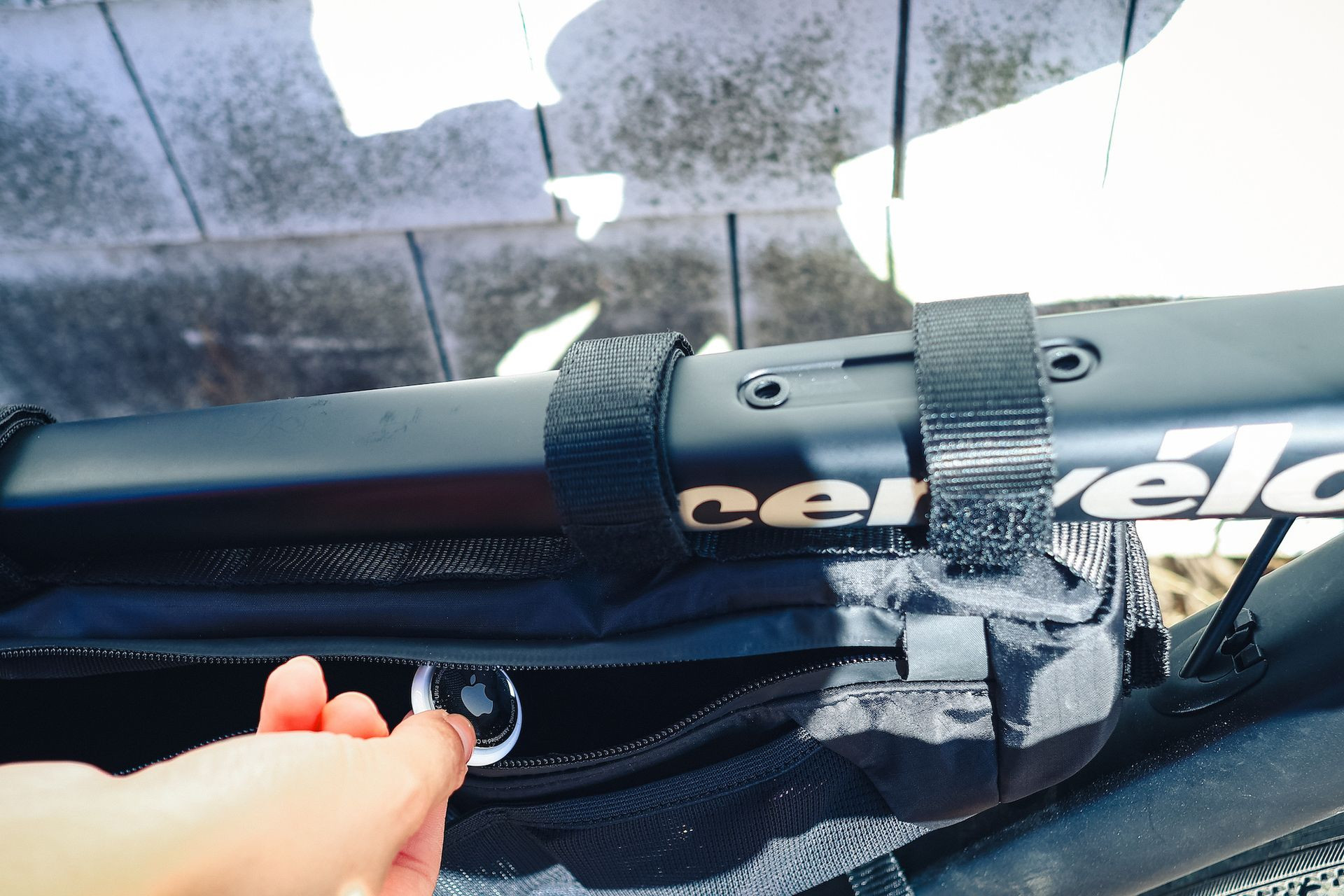 Close up of Apple Airtag
Close up of Apple Airtag
(Image credit: Dan Palma)
Imagine you’ve cleverly concealed an AirTag on your bike. If your bike is stolen while you’re grabbing a coffee, a series of events unfolds based on your AirTag settings.
You can configure alerts to notify you if the AirTag moves out of your proximity. Upon realizing your bike is missing, you open the “Find My” app and select your AirTag (labeled as “bike”). As the thief moves through urban environments, the likelihood of encountering Apple devices that can anonymously ping your AirTag’s location is high, especially in densely populated areas.
The “Find My” app will update with the AirTag’s (and thus your bike’s) location. If the AirTag becomes stationary at a residence, you can then file a police report, providing the location data to assist in recovery efforts, depending on local regulations. If you get close to the AirTag’s location, your iPhone can trigger a beep from the AirTag to aid in pinpointing its exact location. While recovery isn’t guaranteed, an AirTag significantly improves your chances compared to having no tracking system at all. Numerous online accounts detail successful bike recoveries using AirTags.
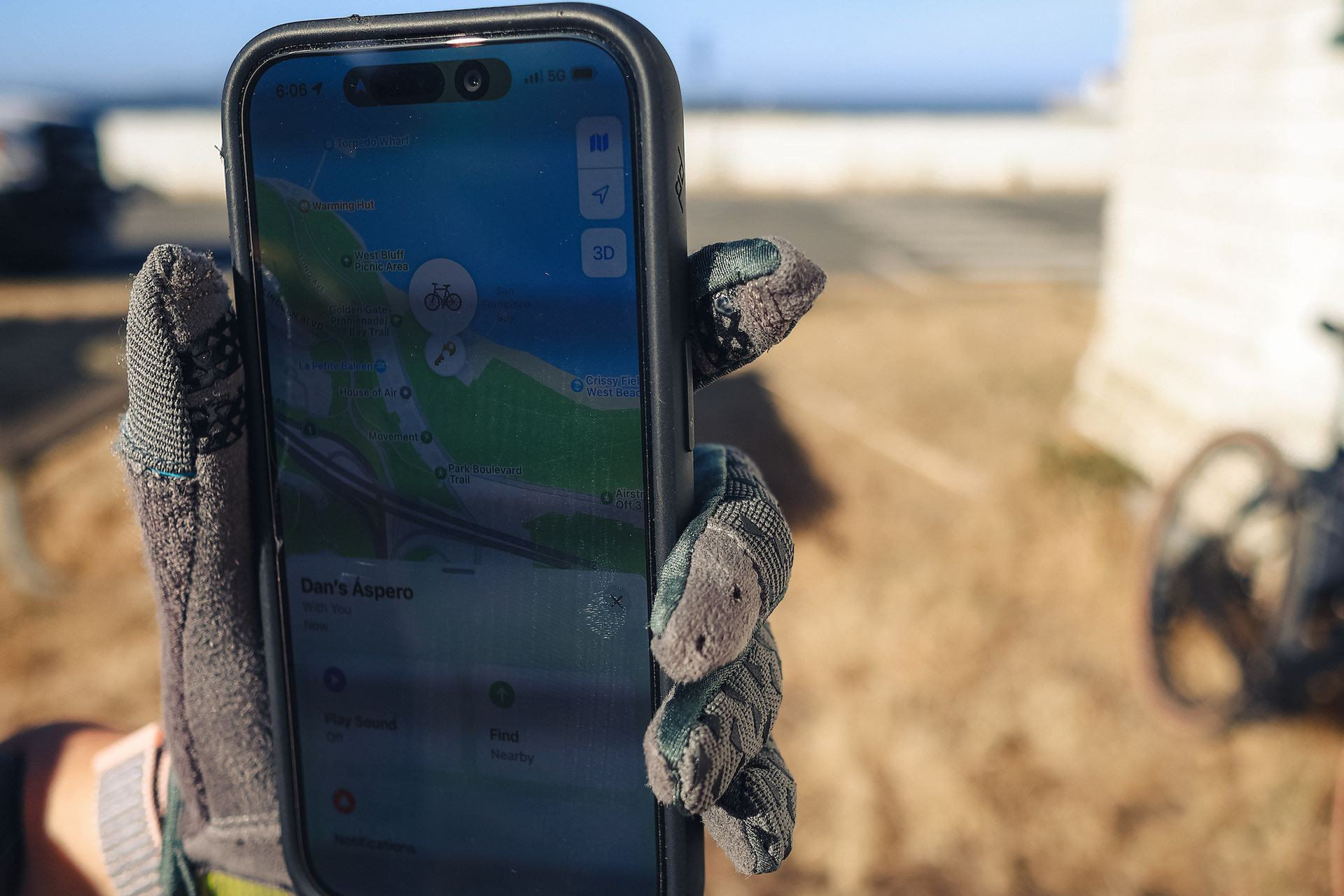 Apple Airtag being placed on a bike
Apple Airtag being placed on a bike
(Image credit: Dan Palma)
Crucially, each AirTag must be linked to a single Apple ID. This is a security feature. If someone were to place an AirTag on your bike without your knowledge, your iPhone would detect an unregistered AirTag tracking your location and alert you. The AirTag itself would also beep to draw attention to its presence, mitigating the risk of surreptitious tracking.
Pros of the Apple AirTag:
 Apple Airtag in hand
Apple Airtag in hand
(Image credit: Dan Palma)
- Effortless Setup: Apple excels at user-friendly device setup, making AirTag installation a breeze.
- Security Feature: The unknown AirTag detection is a significant privacy and security benefit.
- Compact and Lightweight: Its small size allows for versatile and discreet placement on your bike or in a bike bag.
- User-Replaceable Battery: Battery replacement is simple using a standard CR2032 coin cell, lasting up to a year.
- Weather Resistance: AirTags boast an IP67 rating, making them resistant to water, splashes, and dust (up to 1 meter for 30 minutes).
Cons of the Apple AirTag:
- Apple Ecosystem Lock-in: AirTags are exclusively compatible with Apple iPhones.
- Bluetooth Range Limitations: Location accuracy depends on the density of Apple devices in the vicinity. In rural areas, the “Find My Network” may be less reliable.
- No Rechargeable Battery: While the battery is long-lasting and replaceable, a rechargeable option would be a welcome future feature.
- Mounting Accessories Sold Separately: AirTags don’t include adhesives, screws, or mounts for bike attachment; these must be purchased separately from third-party sellers.
Verdict:
Apple AirTags are a valuable entry-level bike security investment, particularly for users already invested in the Apple ecosystem. While the “Find My Network” can be less reliable in sparsely populated areas and location accuracy isn’t GPS-precise, the AirTag offers a significant advantage over no tracker at all. For its affordability and ease of use within the Apple world, the AirTag is a worthwhile consideration for enhancing your bike’s security.
2. Knog Scout Bike Alarm and Finder: Best Rechargeable Bluetooth Bike Tracker
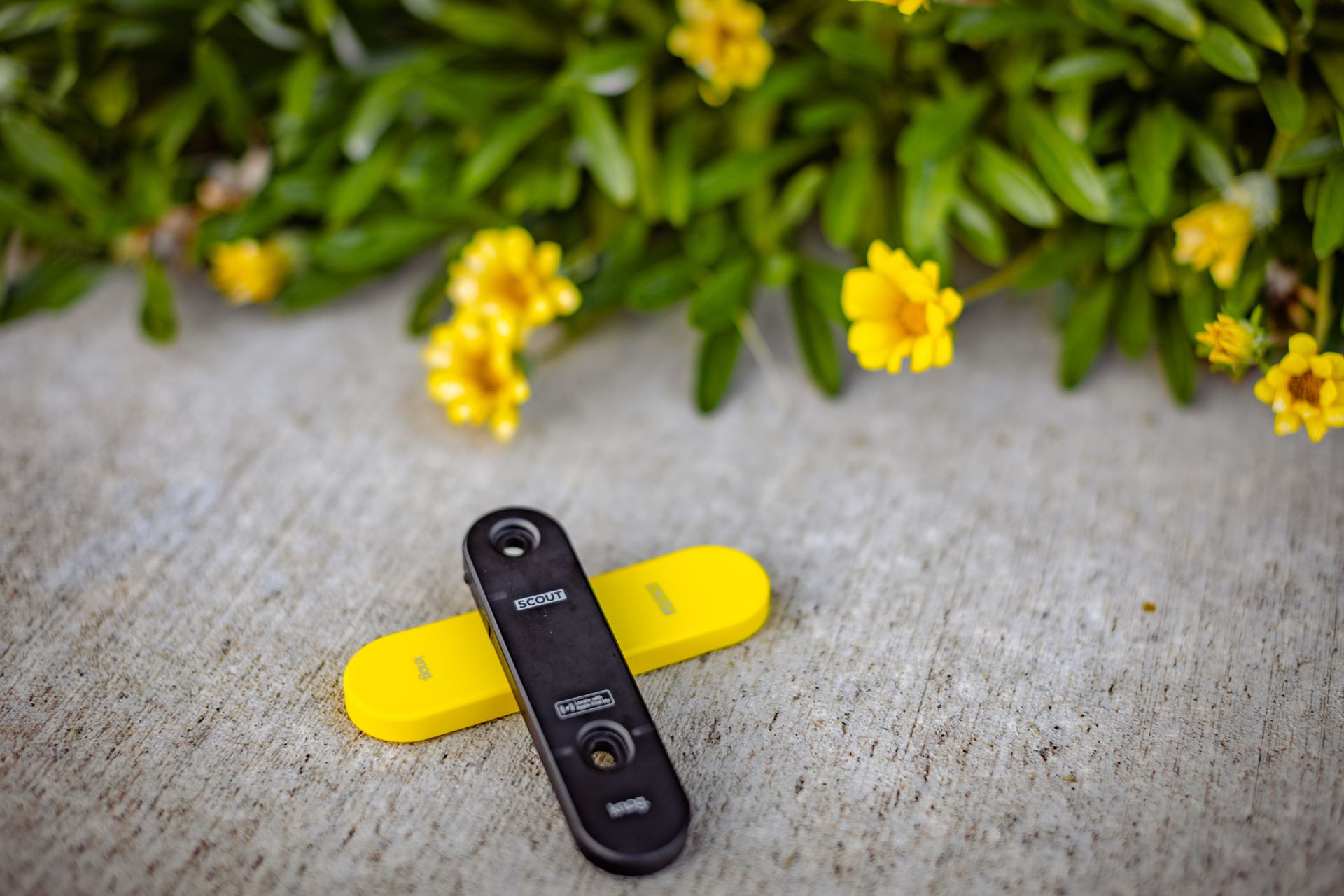 Knog Scout Bike Alarm GPS bike tracker mounted on bike
Knog Scout Bike Alarm GPS bike tracker mounted on bike
(Image credit: Daniel Palma)
Knog Scout Bike Alarm and Finder: Detailed Review
Best for: iPhone users seeking a rechargeable Bluetooth tracker with an integrated alarm.
Expert Analysis:
The Knog Scout Bike Alarm and Finder is a slim, 25-gram rechargeable Bluetooth tracker that also utilizes Apple’s “Find My” technology. Designed for discreet mounting beneath a water bottle cage, it aims to deter theft and aid in bike recovery.
Key Features and Functionality
The Knog Scout integrates with both Apple’s “Find My” app and the dedicated Knog Scout app via Bluetooth. The Knog app allows you to arm and disarm the device and activate a loud 85dB audio alarm. Motion detection triggers both the alarm and a notification to your phone, immediately alerting you to potential tampering.
In the event of theft, like the AirTag, the Knog Scout leverages Apple’s “Find My Network” to provide location updates. (Refer to the Apple AirTag review for details on the “Find My Network”). Crucially, the Knog Scout achieves this functionality without any subscription fees, requiring only a compatible Apple device.
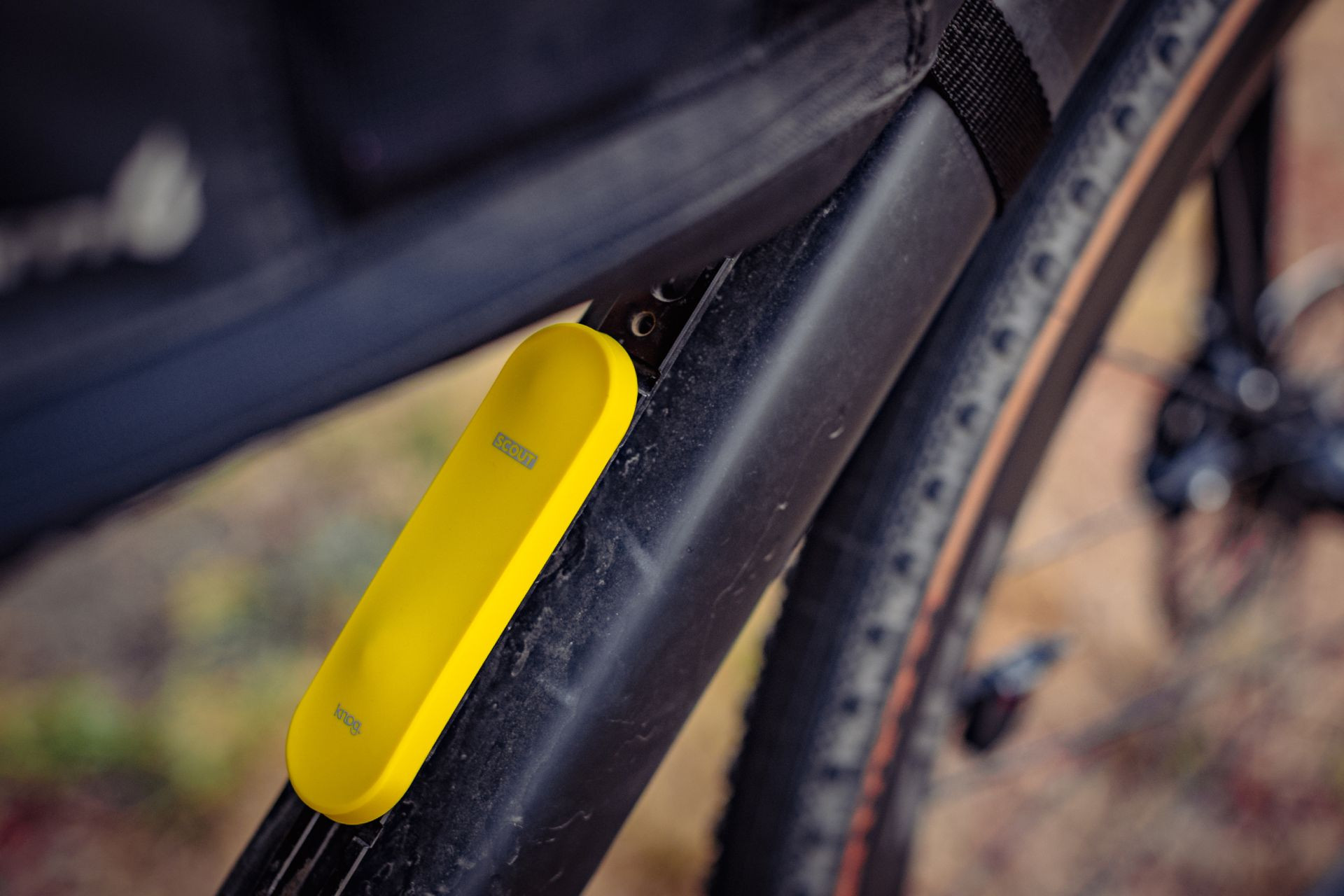 Close up of Knog Scout Bike Alarm
Close up of Knog Scout Bike Alarm
(Image credit: Daniel Palma)
The Knog Scout includes anti-tamper screws for secure mounting and comes with an optional neon yellow silicone cover to act as a visual deterrent. It boasts an IP66 waterproof rating for durability. The USB-C rechargeable battery offers a runtime of two to six months, and LEDs indicate alarm status and battery charge.
Pros of the Knog Scout Bike Alarm and Finder:
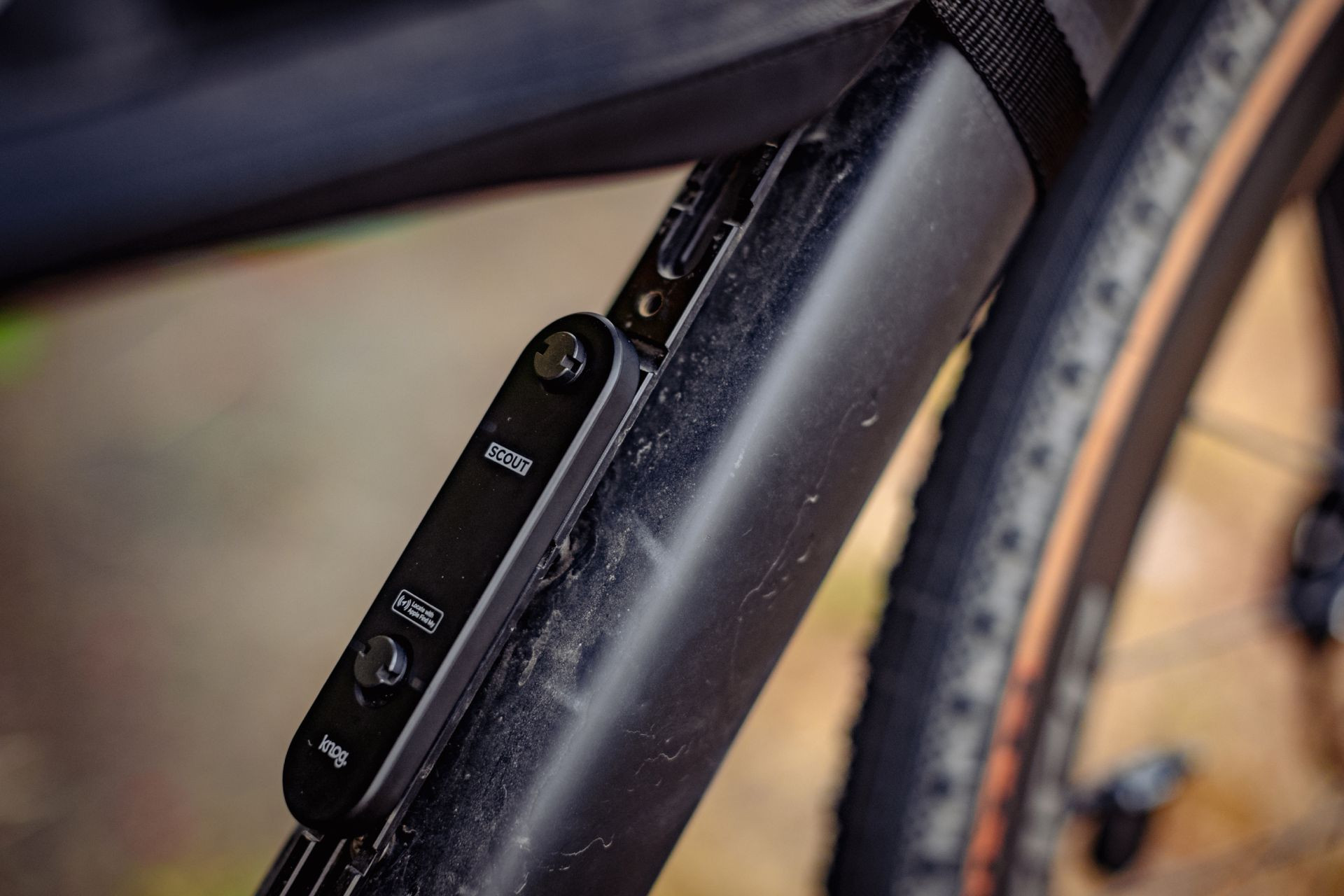 Knog Scout Bike Alarm mounted under bottle cage
Knog Scout Bike Alarm mounted under bottle cage
(Image credit: Daniel Palma)
- Discreet Design: The slim profile and under-bottle-cage mounting make it relatively inconspicuous.
- Integrated Alarm: The loud 85dB alarm is a significant deterrent and theft alert.
- Rechargeable Battery (USB-C): USB-C charging is convenient, and the long battery life is a major plus.
- User-Friendly App: The Knog app simplifies device control and management.
- Tamper-Proof Mounting: Security screws enhance theft resistance.
- Competitive Price: Offers excellent features at a reasonable price point.
- Firmware Updates: App-based firmware updates ensure ongoing improvements.
Cons of the Knog Scout Bike Alarm and Finder:
- Apple Ecosystem Dependence: Requires an iPhone for setup and full functionality.
- Bluetooth Range Limitation: Location accuracy relies on the “Find My Network.”
- No Real-time GPS: Like AirTags, it lacks dedicated GPS for precise, real-time tracking.
- Slower Charge Time: A full charge can take up to four hours.
- Proprietary Screw Tool: Losing the included tool for the tamper-proof screws could be inconvenient.
Verdict:
The Knog Scout Bike Alarm and Finder is a step up from basic Bluetooth trackers like AirTags, offering both tracking and an audible alarm. Its integration with Apple’s “Find My Network” provides reliable location capabilities within the Apple ecosystem. The rechargeable battery and integrated alarm make it an excellent choice for iPhone users seeking enhanced bike security without ongoing subscription fees. If you’re looking for a balance of features, convenience, and deterrence, the Knog Scout is a top contender.
3. Tile Sticker: Best Bluetooth Tracker for Android Bikes and Cross-Platform Use
 Tile Sticker GPS bike tracker on bike frame
Tile Sticker GPS bike tracker on bike frame
(Image credit: Daniel Palma)
Tile Sticker: Detailed Review
Best for: Android users and those seeking a versatile, cross-platform Bluetooth tracker.
Expert Analysis:
Tile has been a long-standing leader in Bluetooth tracking, offering a diverse range of trackers and a well-established network. Tile Stickers are small, adhesive-backed Bluetooth trackers designed for versatile placement on various items, including bikes. The Tile app is compatible with both Apple and Android devices.
Key Features and Functionality
Tile trackers utilize their own extensive Tile Network for location tracking. Connecting a Tile to your phone is done through the free Tile app. Within the app, you can customize the Tile’s name, add a photo (e.g., of your bike), and even select a custom ringtone. The “ping” function in the app activates an audible ring on the Tile, helping you locate your bike within Bluetooth range.
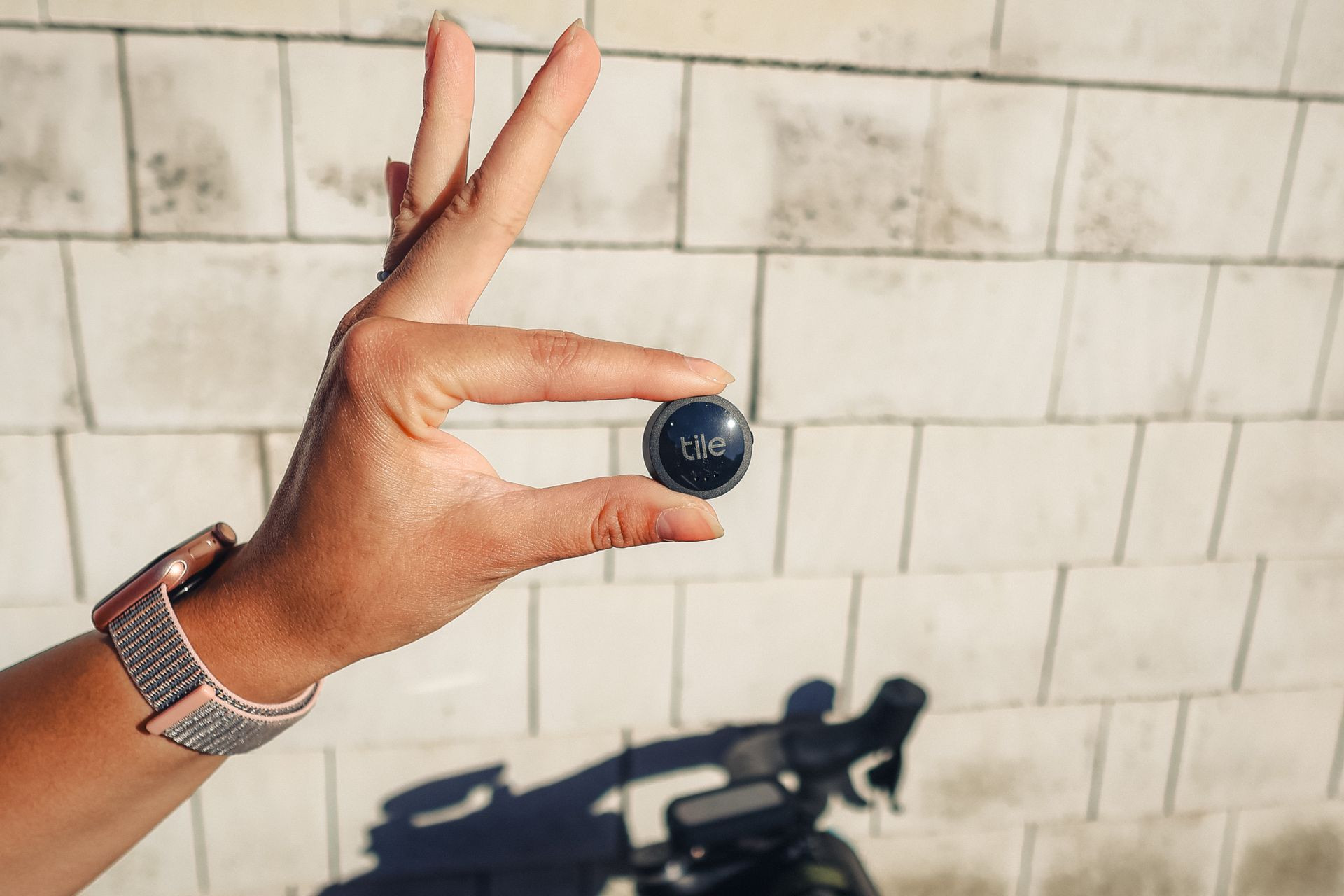 Various Tile Sticker GPS bike trackers
Various Tile Sticker GPS bike trackers
(Image credit: Daniel Palma)
Tile offers different models with varying Bluetooth ranges (250-400 feet). If your bike with a Tile tracker moves beyond Bluetooth range, the Tile Network comes into play. The app displays the Tile’s last known location on a map. By activating the “Notify When Found” feature, the Tile network anonymously leverages other devices running the Tile app (including iOS, Android, Fitbit, and Bose devices) to update the location if your Tile comes within their Bluetooth range. Tile’s partnership with Amazon Sidewalk further expands its network coverage, particularly in urban areas, utilizing devices like Ring doorbells.
All Tile devices are water-resistant (IP67) and feature an audible ring. Battery options vary: the Tile Pro has a user-replaceable CR2032 battery, while Tile Mate, Slim, and Sticker models have non-replaceable batteries with a long 3-year lifespan. Newer Tile models also include scannable QR codes on the back, allowing finders to access owner-provided contact information.
Pros of the Tile Sticker:
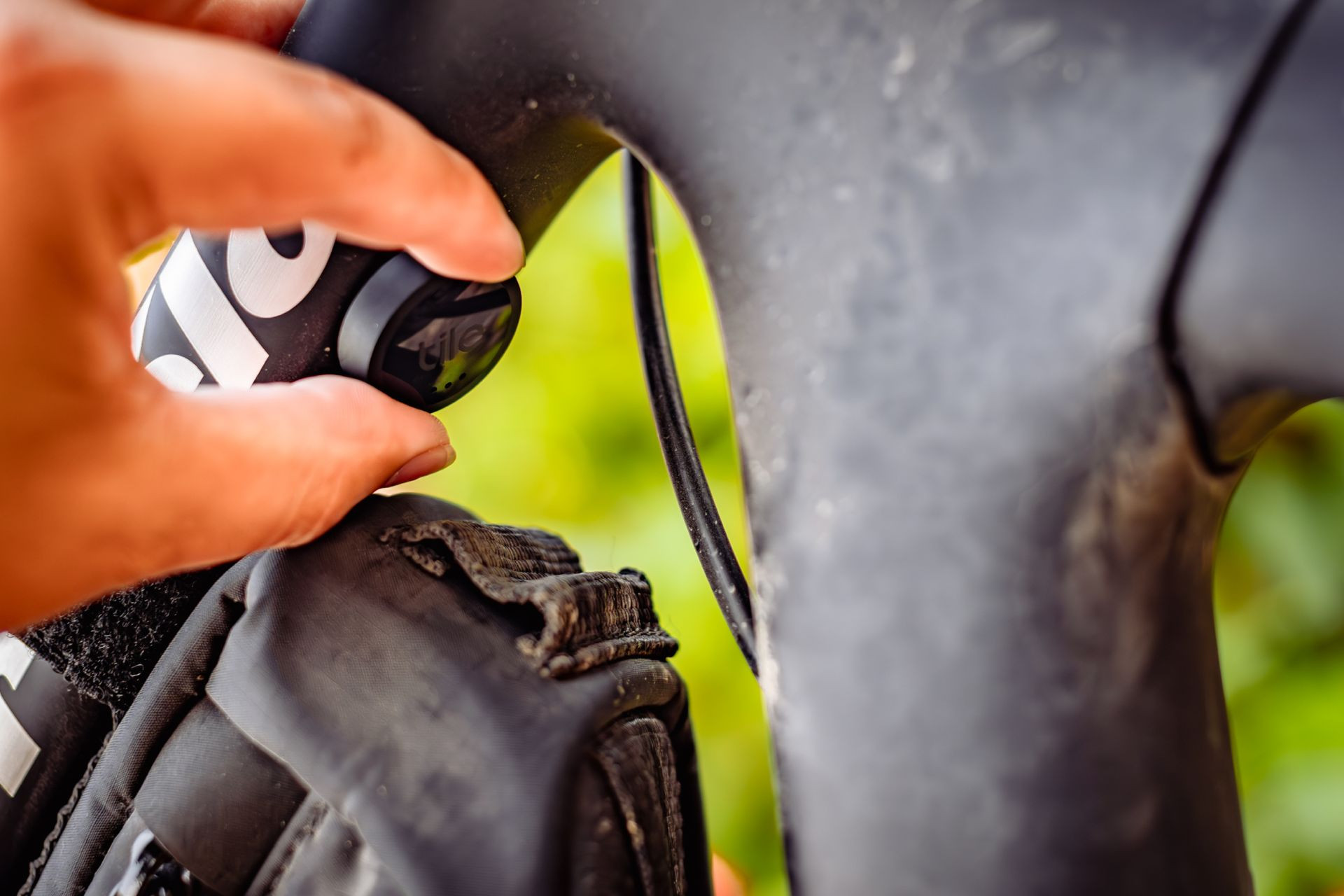 Tile Sticker GPS bike tracker in hand
Tile Sticker GPS bike tracker in hand
(Image credit: Daniel Palma)
- Versatile Sizes and Models: Tile offers various sizes and form factors to suit different placement needs on a bike.
- Easy-to-Use App: The Tile app is intuitive and reliable, providing quick access to tracker functions.
- Discreet Placement: Tile Stickers, in particular, are small and easily concealed.
- Cross-Platform Compatibility: Works seamlessly with both Apple and Android devices.
- Affordable: Tile trackers are generally budget-friendly.
- Established and Growing Network: The Tile Network is large and expanding through partnerships like Amazon Sidewalk.
Cons of the Tile Sticker:
- Bluetooth Range Limitations: Like other Bluetooth trackers, range is limited, and location updates depend on network density.
- No GPS/Cellular: Lacks dedicated GPS for precise, real-time tracking.
- Subscription for Premium Features: While basic tracking is free, features like smart alerts and 30-day location history require a paid subscription (Tile Premium).
- Battery Limitations: Non-replaceable batteries in some models (Mate, Slim, Sticker) mean the entire device needs replacing after 3 years.
- Network Reliance: Location accuracy relies on the Tile network, which may be less effective in rural areas.
Verdict:
Tile Stickers are a solid choice for Bluetooth-based bike tracking, especially for Android users or those needing cross-platform compatibility. Tile’s long history in the market and extensive network provide a reliable tracking ecosystem. While lacking dedicated GPS, Tile trackers offer a balance of affordability, versatility, and a growing network, making them a worthwhile option for enhancing bike security, particularly in urban environments. Consider combining a Tile with other tracking methods for comprehensive peace of mind, especially for high-value bikes.
4. Orbit x Velo: Bike-Friendly Bluetooth Tracker with Long Battery Life
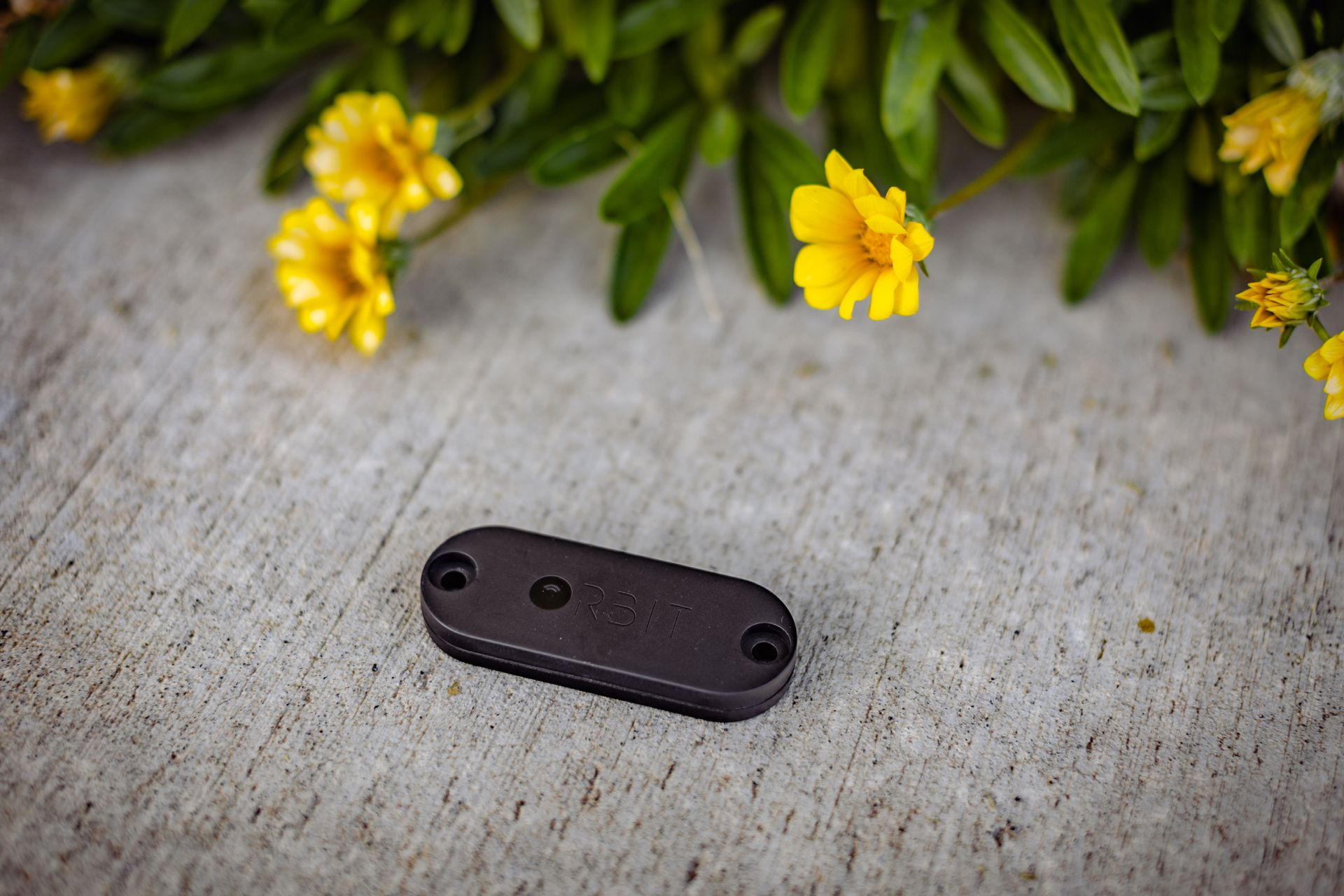 Orbit x Velo GPS bike tracker mounted on bike
Orbit x Velo GPS bike tracker mounted on bike
(Image credit: Daniel Palma)
Orbit x Velo: Detailed Review
Best for: Apple users seeking a bike-specific Bluetooth tracker with exceptional battery life.
Expert Analysis:
The Orbit x Velo is a compact Bluetooth tracker specifically designed for bicycle use. Weighing 80 grams, it’s intended for secure mounting on your bike using bolts, adhesive, or zip ties.
Key Features and Functionality
Orbit x Velo integrates Apple’s “Find My” technology, similar to Apple AirTags. This means it exclusively operates within the Apple ecosystem and is compatible with Apple devices that support the “Find My” app.
 Close up of Orbit x Velo GPS bike tracker
Close up of Orbit x Velo GPS bike tracker
(Image credit: Daniel Palma)
Once paired with your Apple device, you can track the Orbit x Velo’s location via the “Find My” app, relying on the network of surrounding Apple devices. Like AirTags, it doesn’t offer real-time GPS tracking, and communication is anonymous and encrypted through the “Find My Network.”
The Orbit x Velo is designed with bike mounting in mind, including security bolts and a specialized tool for installation. It has an IPX6 water resistance rating and utilizes two replaceable CR2032 coin cell batteries, claiming a battery life of up to three years. You can also trigger a sound from the tracker via the “Find My” app to help locate it within Bluetooth range.
Pros of the Orbit x Velo:
- Bike-Specific Design: Designed for secure and discreet bike mounting.
- Long Battery Life: Up to 3 years of battery life from replaceable coin cells.
- Apple “Find My” Integration: Leverages the extensive Apple network.
- Weather Resistant: IPX6 rating for water resistance.
- Competitive Price: Offers good value for its features.
- Multiple Mounting Options: Includes bolts, adhesive, and zip ties for versatile attachment.
Cons of the Orbit x Velo:
- Apple Ecosystem Lock-in: Exclusively compatible with Apple devices.
- Bluetooth Range Limitations: Location accuracy depends on the “Find My Network.”
- No Real-time GPS: Lacks dedicated GPS for precise, real-time tracking.
- No Alarm Feature: Unlike some competitors, it doesn’t have an integrated alarm.
- Potentially Confusing App: Orbit offers its own app, but it’s not compatible with the “Find My”-enabled Orbit x Velo, which could lead to user confusion.
- Limited Audible Alert: The sound emitted for location finding may not be very loud, especially in noisy environments.
- No U1 Chip Integration: Lacks Apple’s U1 chip for more precise location finding within close range.
Verdict:
The Orbit x Velo is a solid Bluetooth tracker option for Apple users seeking a bike-specific device. It effectively leverages Apple’s “Find My Network” and offers a bike-friendly design with long battery life at a competitive price. While lacking some features like an alarm or real-time GPS, it provides a reliable and discreet tracking solution for cyclists within the Apple ecosystem.
GPS / LTE BIKE TRACKERS: Detailed Reviews
1. Invoxia Real Time GPS Tracker: Best GPS Tracker with Audible Alarm
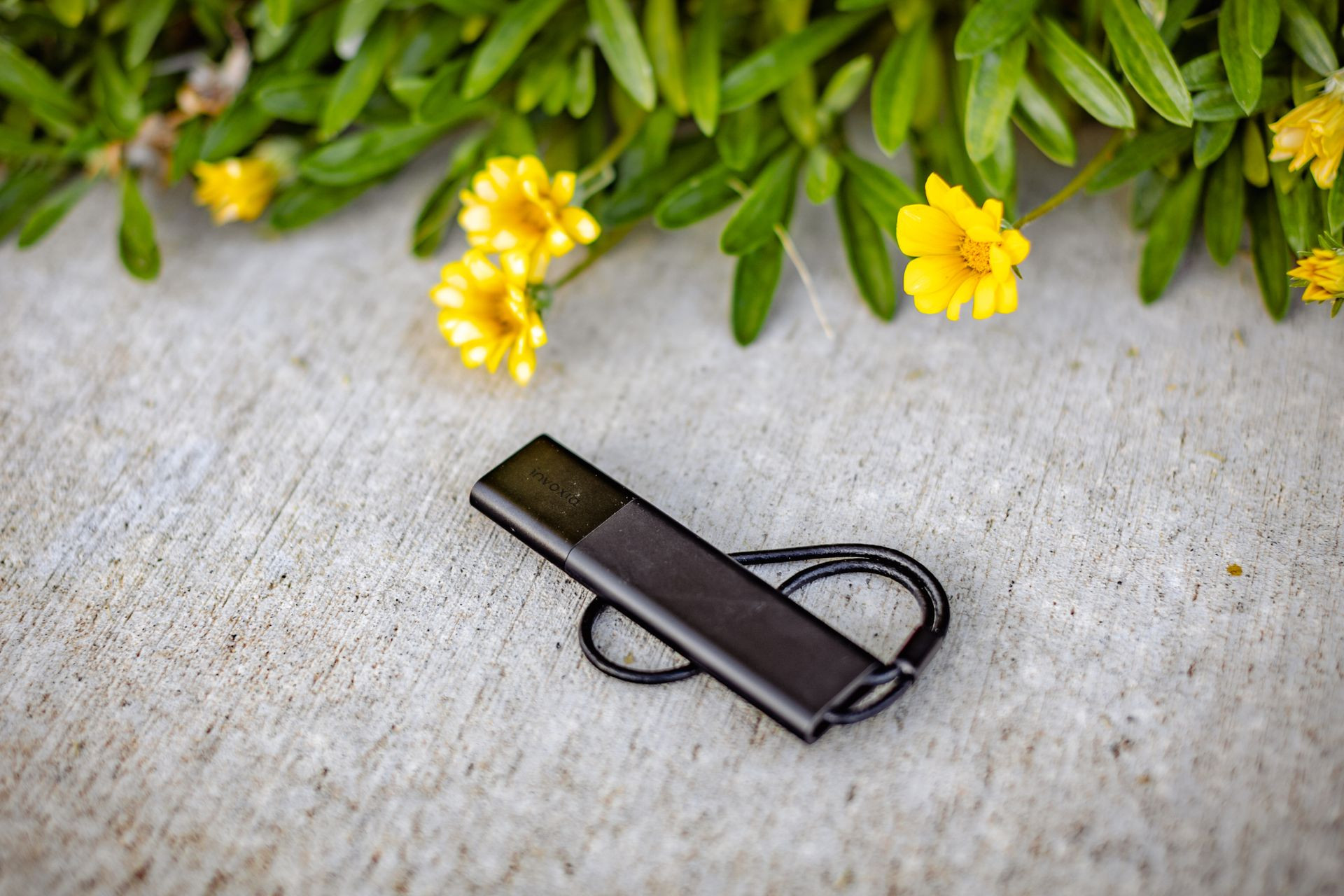 Invoxia Real Time GPS Tracker in hand
Invoxia Real Time GPS Tracker in hand
(Image credit: Daniel Palma)
Invoxia Real Time GPS Tracker: Detailed Review
Best for: Users seeking a slim, rechargeable GPS tracker with a unique audible alarm feature.
Expert Analysis:
The Invoxia Real Time GPS Tracker is a slim and lightweight (30g) rechargeable GPS tracker designed for tracking valuables. It offers versatile positioning technologies and a standout audible alarm feature, uncommon in GPS trackers.
Key Features and Functionality
The Invoxia tracker uses low-power GPS for outdoor positioning, Wi-Fi for indoor location, and Bluetooth for proximity tracking. It updates its location at intervals of 2, 5, 10, or 30 minutes while in motion. A “Real-Time Boost” mode provides 30-second updates for 30 minutes in emergencies. It transmits location data via 4G LTE-M cellular networks, prioritizing Wi-Fi positioning when available and falling back to GPS otherwise.
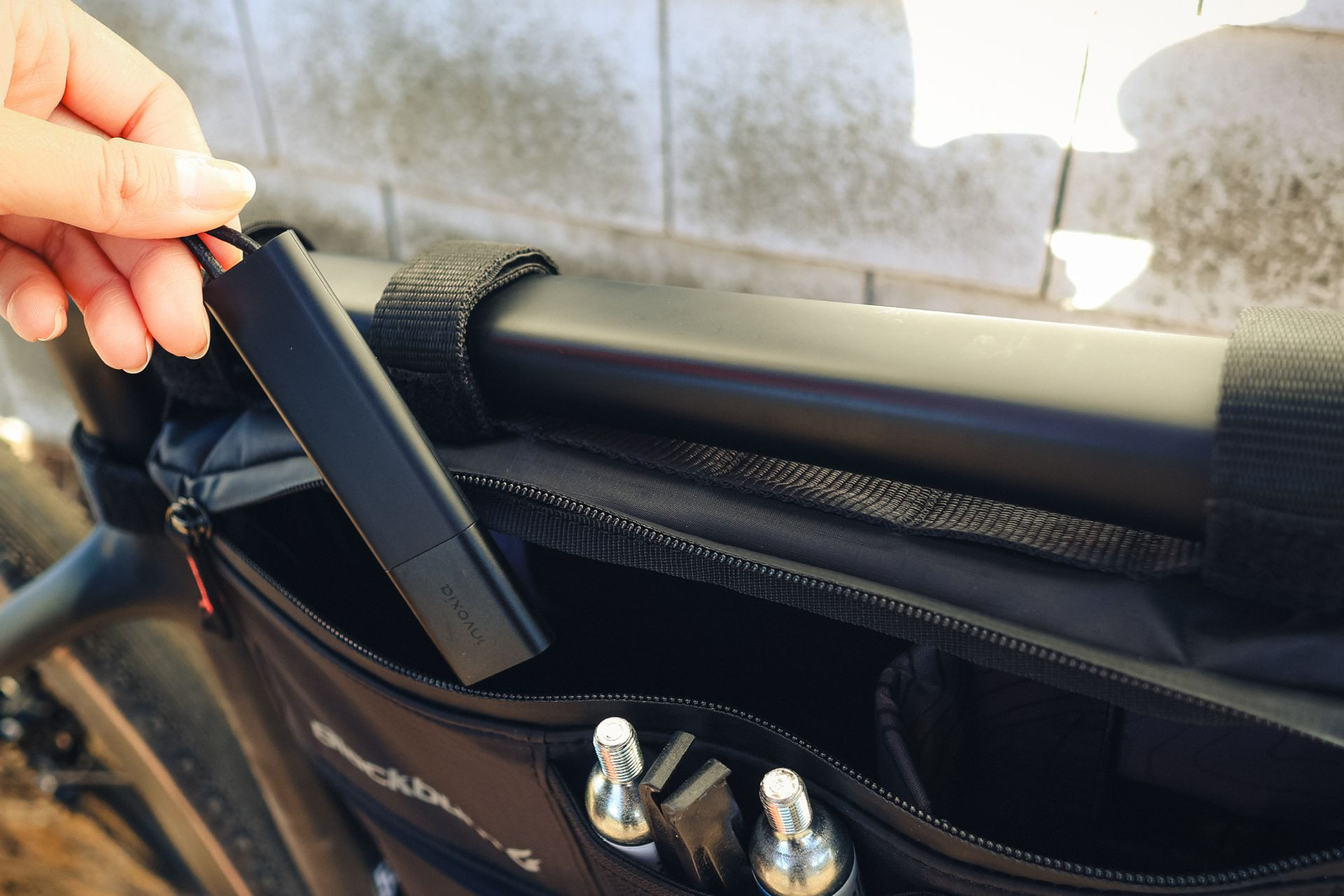 Invoxia Real Time GPS Tracker app interface
Invoxia Real Time GPS Tracker app interface
(Image credit: Daniel Palma)
The Invoxia app displays the tracker’s location and history. You can set up real-time movement alerts triggered after five minutes of inactivity, useful for bike lock-ups. “Virtual fences” (geofences) allow you to define areas like home or work, triggering alerts when the tracker (and your bike) enters or exits these zones.
A unique feature is the Bluetooth “hot/cold” proximity radar in the app. When near the tracker, this radar helps pinpoint its location, even down to ringing the tracker to confirm its position, similar to AirTags and Tiles.
Pros of the Invoxia Real Time GPS Tracker:
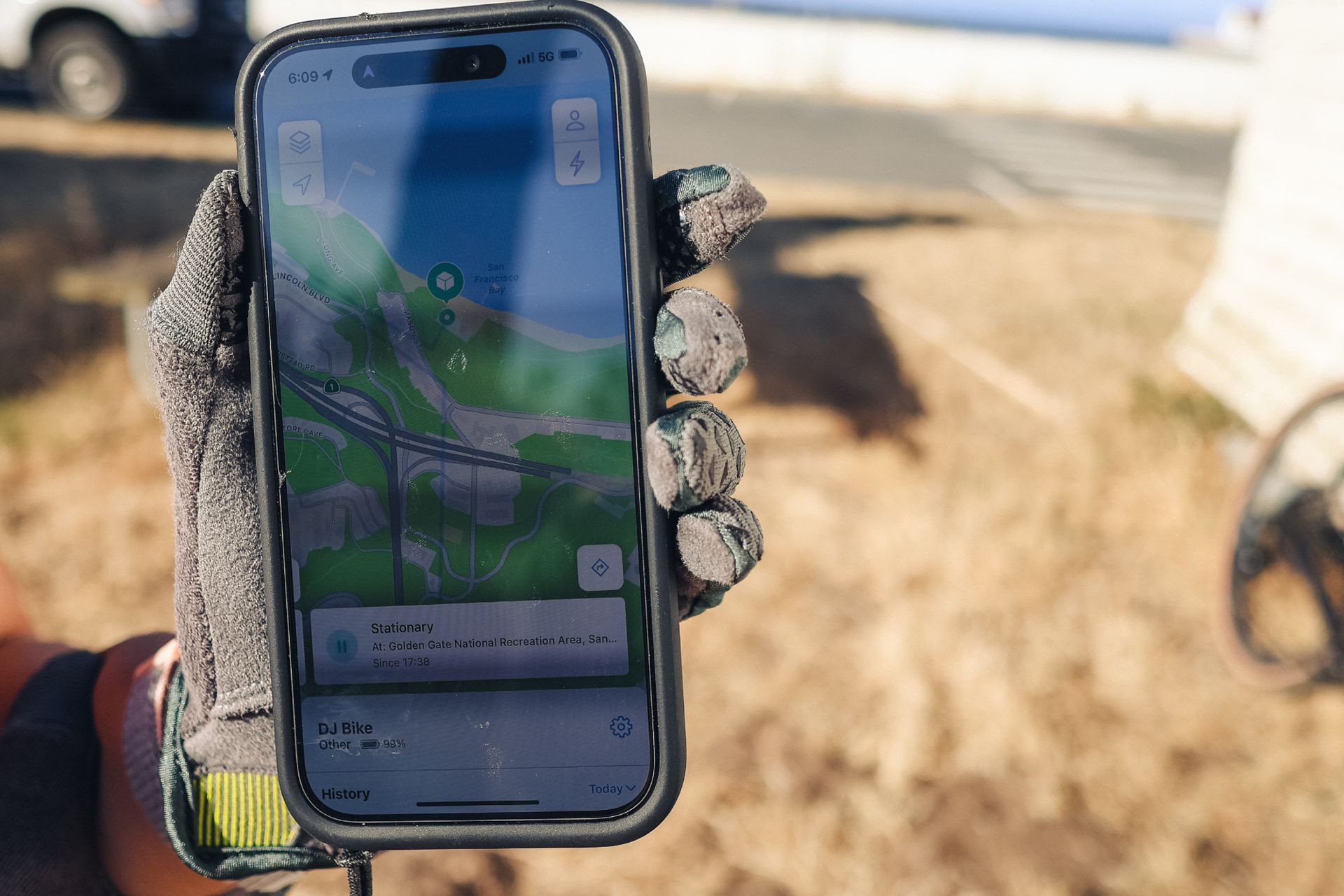 Invoxia Real Time GPS Tracker with accessories
Invoxia Real Time GPS Tracker with accessories
(Image credit: Daniel Palma)
- Slim and Lightweight Design: Compact and easy to conceal.
- Rechargeable Battery: Long-lasting rechargeable battery with quick 90-minute charging.
- Versatile Positioning Technologies: Combines GPS, Wi-Fi, and Bluetooth for comprehensive location tracking.
- Audible Alarm: A rare and valuable feature for proximity finding and potential theft deterrence.
- User-Friendly App: Intuitive app for both Apple and Android devices.
- Free 1-Year Subscription: Includes a free year of service upon activation.
- Geofencing and Movement Alerts: Enhanced security and location awareness.
Cons of the Invoxia Real Time GPS Tracker:
- Subscription Required (After First Year): Requires a subscription after the initial free year.
- Limited Water Resistance: Only partially splash-resistant (IP33) and requires an optional weatherproof pouch for better protection.
- Faint Alarm Sound: The audible alarm could be louder for improved effectiveness.
- Not Bike-Specific (US Version): The US version isn’t specifically designed for bikes, though a bike reflector version exists in Europe.
- No Tamper Detection: Lacks features like tamper alerts or alarms triggered by removal attempts.
Verdict:
The Invoxia Real Time GPS Tracker stands out with its slim design, versatile tracking technologies, and unique audible alarm. While not explicitly designed for bikes in the US market (though adaptable), it offers robust GPS tracking capabilities and useful features like geofencing and movement alerts. The included first year of subscription adds to its value. The Invoxia is a strong contender for users prioritizing a discreet, feature-rich GPS tracker with an audible alarm for bike security and general valuable tracking.
2. Land Air Sea 54: Best Budget-Friendly GPS Bike Tracker
 Land Air Sea 54 GPS bike tracker in hand
Land Air Sea 54 GPS bike tracker in hand
(Image credit: Daniel Palma)
Land Air Sea 54: Detailed Review
Best for: Budget-conscious users seeking a reliable and versatile GPS tracker with subscription options.
Expert Analysis:
The Land Air Sea 54 is a puck-shaped, subscription-based real-time GPS tracker known for its affordability and robust tracking capabilities. Weighing 82 grams, it’s designed for general-purpose tracking of assets, including bikes.
Key Features and Functionality
The Land Air Sea 54 utilizes 4G LTE and GPS technology, along with GLONASS, BeiDou-Compass, Galileo, and QZSS satellite systems for enhanced location accuracy and reliability. You can select update intervals from 3 seconds to 3 minutes based on your subscription plan.
The Land Air Sea app and website provide secure access to device data, including real-time location, stops, and idle time. Features include geofence alerts, speed alerts, battery alerts, and a ShareSpot function for location sharing. Historical playback allows you to review past location data.
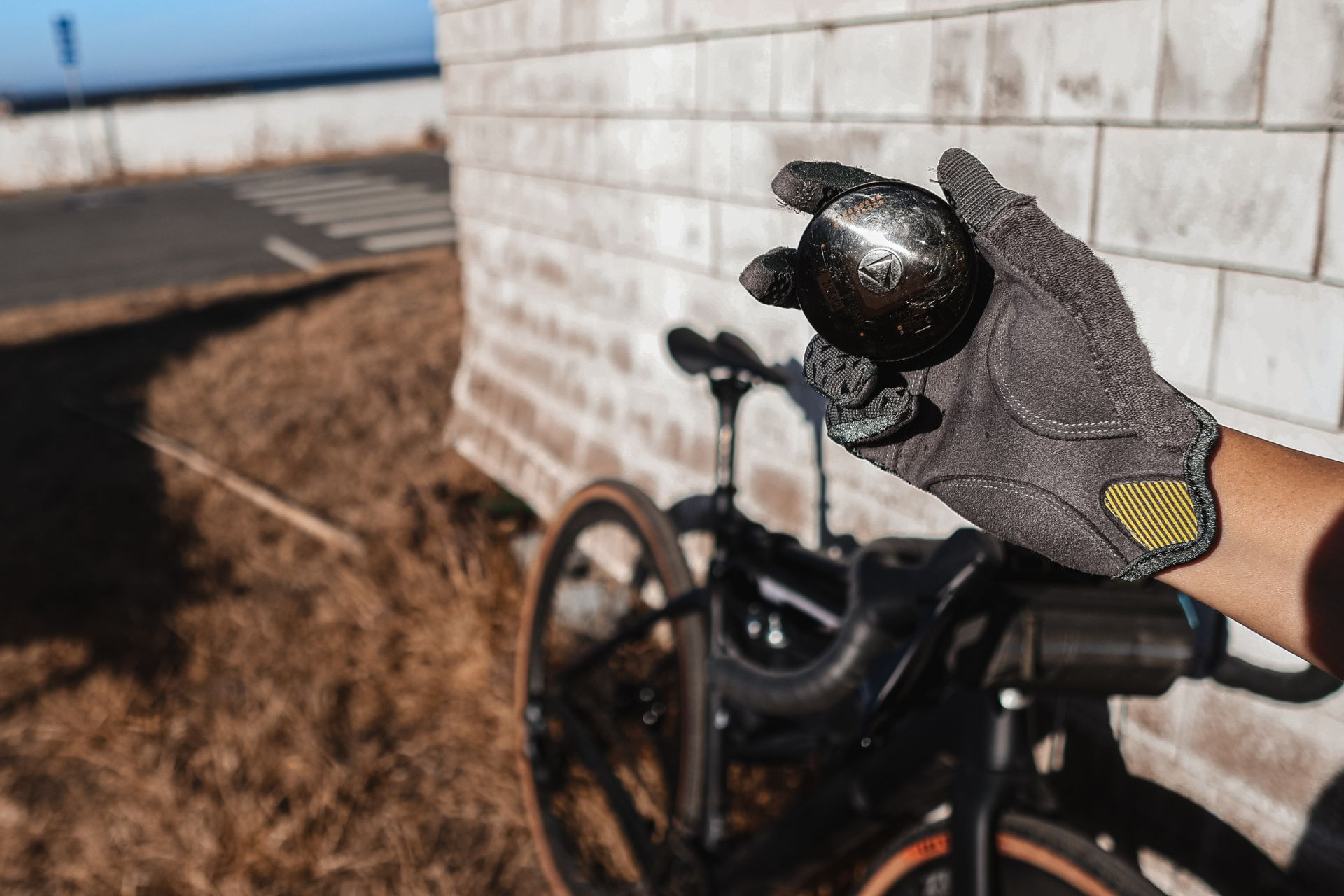 Land Air Sea 54 GPS bike tracker with accessories
Land Air Sea 54 GPS bike tracker with accessories
(Image credit: Daniel Palma)
Pros of the Land Air Sea 54:
- Affordable Hardware Cost: The device itself is relatively inexpensive.
- Long Battery Life: Rechargeable battery lasts 1-3 weeks, or up to 6 months in “Low Power Mode.”
- Robust Connectivity: Utilizes multiple satellite systems and cellular for reliable tracking.
- Water and Dustproof: IP67 rating for environmental protection.
- LED Indicators: LEDs show connection and power status.
- Magnetic Mount: Internal magnet for attachment to metal surfaces.
- Optional Hardware Kit: Hardware kit available for potentially powering the device from an e-bike battery (DIY required).
- Versatile Subscription Plans: Offers various subscription options with no contracts.
Cons of the Land Air Sea 54:
- Subscription Costs: Monthly subscriptions can become expensive depending on the chosen plan and update frequency.
- Bulky Design for Bikes: Puck-shaped design can be challenging to discreetly mount on a bike.
- No Bike-Specific Features: Lacks bike-specific features like alarms or tamper detection.
- App Design Could Be Improved: The app interface could be more modern and user-friendly.
- Proprietary Power Key: Requires a pinhole “Power Key” to turn the device on/off; losing it could be problematic.
Verdict:
The Land Air Sea 54 is a budget-friendly entry point into real-time GPS bike tracking. Its versatile subscription plans, robust tracking technology, and weather resistance make it a practical option, especially if you prioritize affordability and are comfortable with its general-purpose design. While not bike-specific, it can be effectively used to track your bike, especially if you utilize a saddlebag or other carrying solution. Consider the subscription costs and mounting challenges when evaluating this tracker.
3. Cycloop Tracker: Best GPS Bike Tracker for Exceptional Battery Life and Anti-Tamper Security
 Cycloop GPS bike tracker mounted on seatpost
Cycloop GPS bike tracker mounted on seatpost
(Image credit: Daniel Palma)
Cycloop Tracker: Detailed Review
Best for: Cyclists prioritizing long battery life, tamper-proof security, and a “set-and-forget” GPS tracking solution.
Expert Analysis:
The Cycloop tracker is a substantial, anti-theft GPS system designed specifically for bikes. Weighing 249 grams, it’s not discreet but offers exceptional battery life and tamper-resistant features.
Key Features and Functionality
The Cycloop mounts to your bike’s seat tube using a two-piece clamp and specialized tamper-proof screws. Attempting to tamper with or remove the Cycloop triggers an alarm and sends a notification to your phone. It includes a key fob linked to the device; when the fob is not nearby, any detected movement activates “Alarm Mode.”
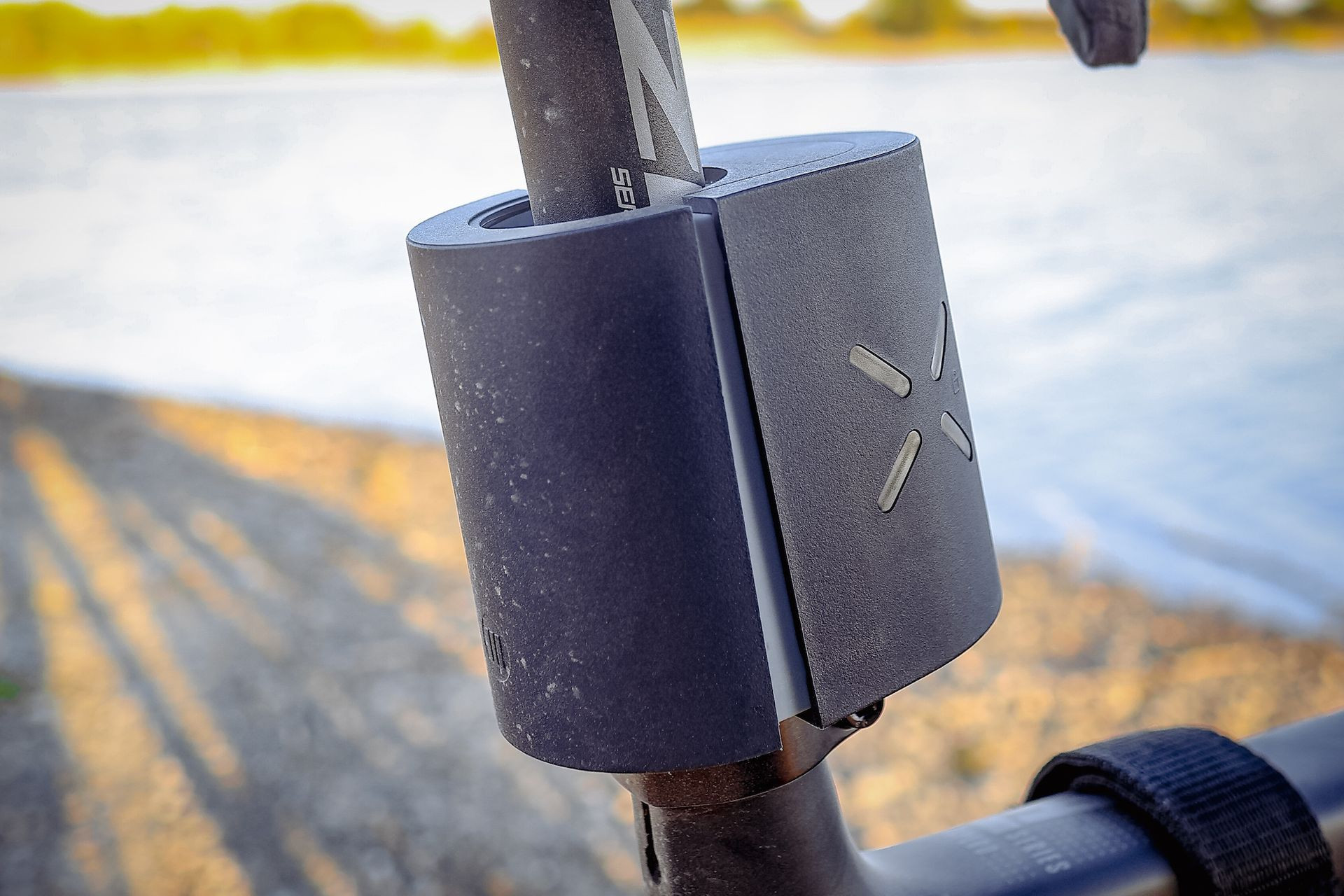 Close up of Cycloop GPS bike tracker
Close up of Cycloop GPS bike tracker
(Image credit: Daniel Palma)
The Cycloop uses GLONASS and GPS for global tracking and LTE CAT-M1 connectivity (via eSIM). It’s not a constant real-time tracker to conserve battery life. In “Alarm Mode,” it connects to the LTE network and begins transmitting its location, sending up to 1500 location updates at 5-minute intervals, providing several days of tracking.
A large 1930mAh rechargeable battery enables long battery life (up to a year with LEDs off, 3 months with LEDs on). Integrated LED lights on the sides enhance rider visibility. The battery recharges via USB-C in two hours. The key fob uses a replaceable CR2032 battery. The Cycloop is water and dust-resistant (IP65). Rubber inserts accommodate various seat tube diameters (25mm-37mm).
Pros of the Cycloop Tracker:
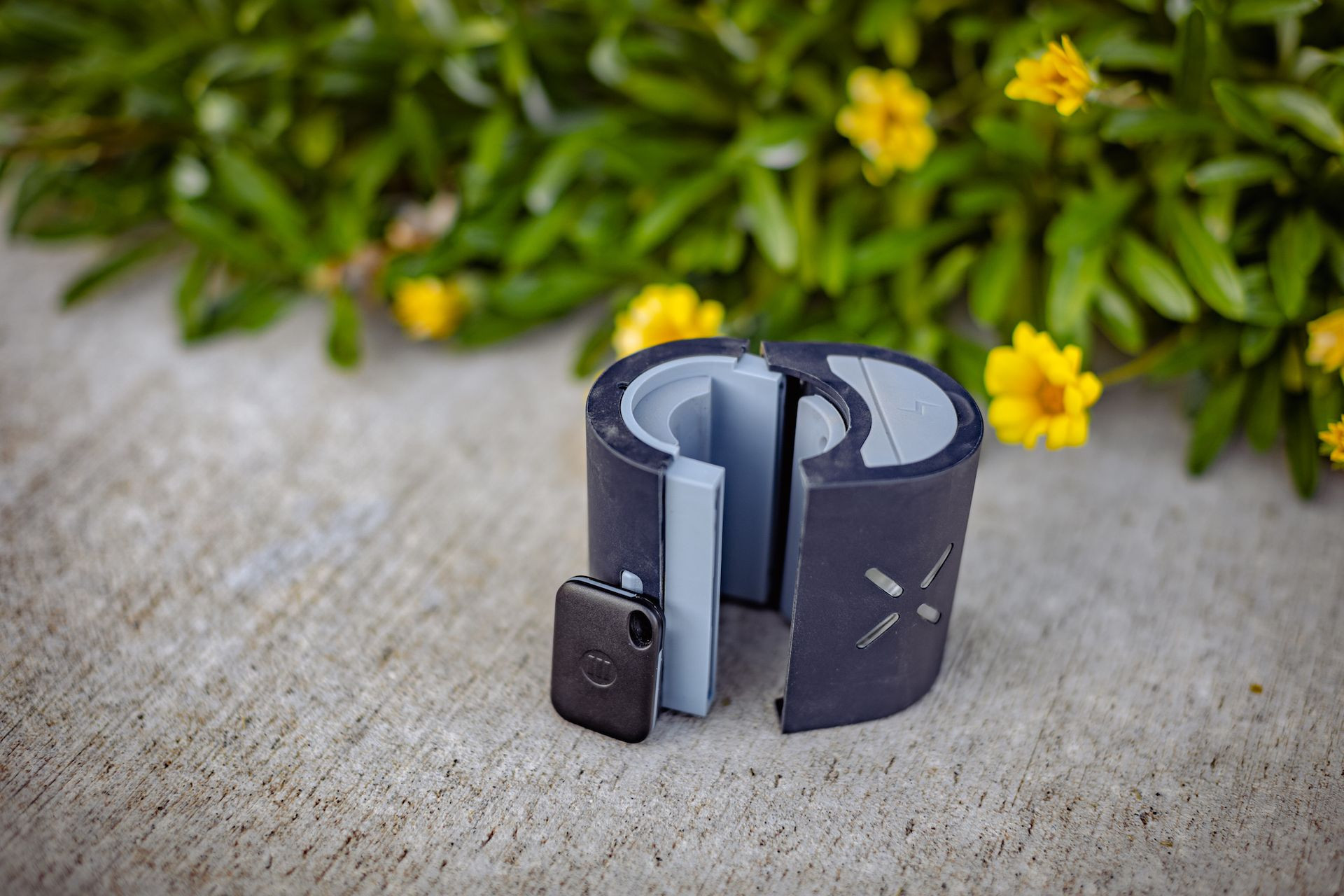 Cycloop GPS bike tracker with LED lights
Cycloop GPS bike tracker with LED lights
(Image credit: Daniel Palma)
- Exceptional Battery Life: Up to 12 months of battery life, minimizing charging needs.
- Tamper-Proof Design: Secure mounting and tamper alerts enhance theft resistance.
- Integrated LED Lights: Increase rider visibility, adding a safety feature.
- “Set and Forget” Operation: Minimal user interaction required after installation.
- Key Fob Arming/Disarming: Automatic arming when the key fob is out of range.
- Robust Tracking Technology: Uses GPS, GLONASS, and LTE for reliable global tracking.
- User-Friendly App: Simple app for setup, monitoring, and customization.
- Included Subscription: Comes with 2 months of free GSM connectivity service.
Cons of the Cycloop Tracker:
- Bulky and Visible Design: Large size and seatpost mounting make it not very discreet.
- Annual Subscription Fee: Requires an annual fee for GSM connectivity after the initial free period.
- No Audible Alarm: Lacks a loud audible alarm to deter thieves during theft attempts.
- Potential Fit Issues: May not fit all bike frame tubes, especially on carbon frames with non-standard shapes.
- LED Lights Not Day-Visible: LED lights are primarily effective at night, not for daytime visibility enhancement.
- Micro-USB Charging: Uses Micro-USB instead of the more modern USB-C for charging.
Verdict:
The Cycloop tracker prioritizes long battery life and anti-tamper security, making it a “set-and-forget” GPS tracking solution for bikes. Its robust design and tamper alerts deter theft, while the long battery life ensures continuous protection. While bulky and visible, its features and ease of use make it a compelling option for cyclists seeking reliable, long-term bike security, especially in areas with high theft risk. Consider its size and visual impact on your bike’s aesthetics.
4. Tocsen Crash Sensor & Aleck Punks: Best for Group Rides and Safety Communication
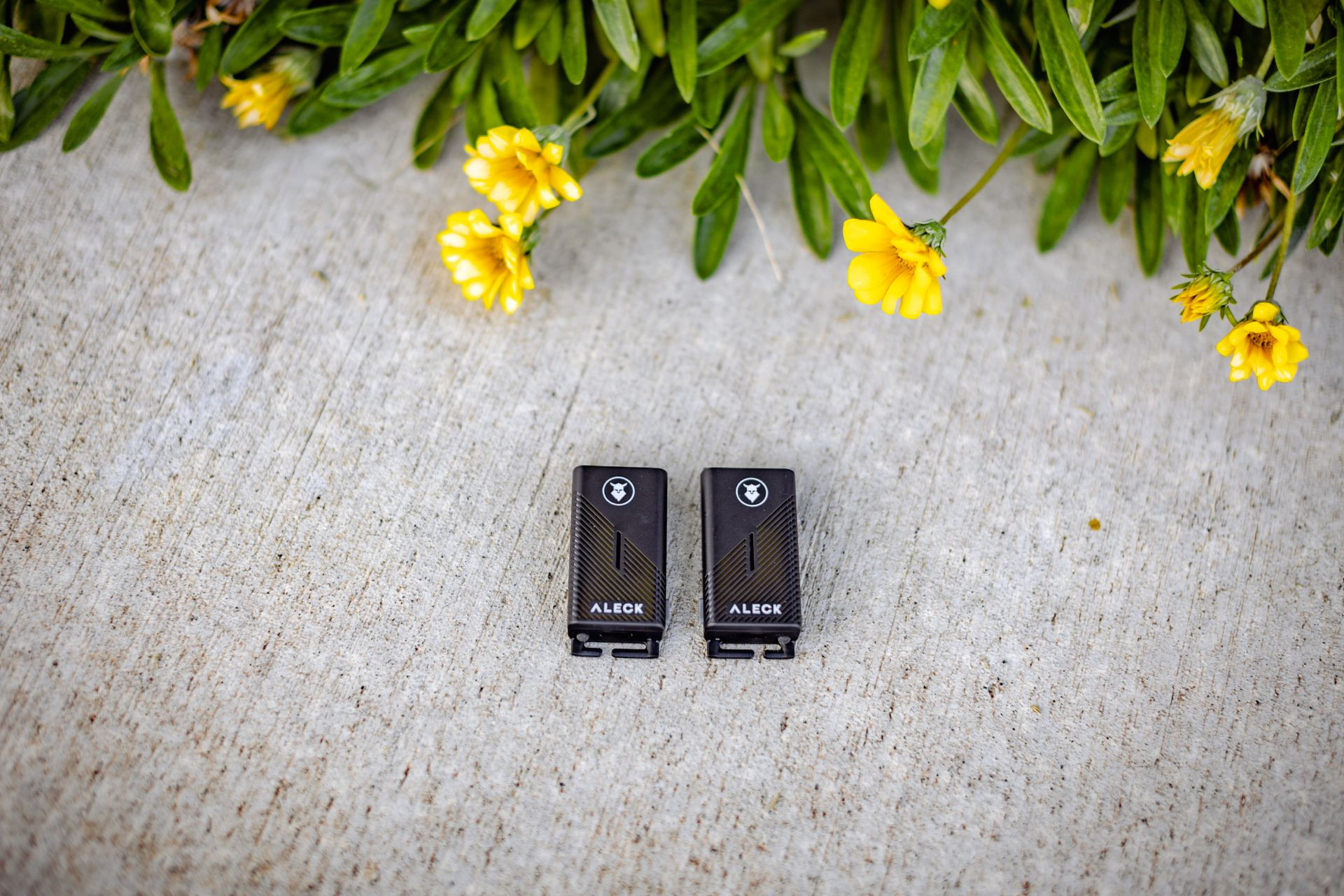 Tocsen Crash Sensor & Aleck Punks Wireless communication devices
Tocsen Crash Sensor & Aleck Punks Wireless communication devices
(Image credit: Daniel Palma)
Tocsen Crash Sensor & Aleck Punks: Detailed Review
Best for: Cyclists who prioritize group ride communication, crash detection, and safety features.
Expert Analysis:
The Tocsen Crash Sensor and Aleck Punks are Bluetooth devices designed to enhance safety and communication during bike rides. They rely on your smartphone’s GPS and cellular network for location sharing and communication features.
Key Features and Functionality
The Tocsen Crash Sensor (10g) is a helmet-mounted device that detects crashes. Upon detecting a crash or manual activation via the app, it shares your location with emergency contacts and the Tocsen Rescue Community (other Tocsen app users) within a 1.8-mile radius.
 Tocsen Crash Sensor & Aleck Punks components
Tocsen Crash Sensor & Aleck Punks components
(Image credit: Daniel Palma)
Aleck Punks (15g each) are near-ear wireless audio and group communication devices for open-face helmets. They feature built-in microphones and speakers, enabling group communication and location sharing among Aleck Punk users in a “group call.” You can see the location of other riders in your group on the app map.
Both devices are water-resistant (IP67). The Tocsen includes an adhesive mount and Micro-USB charging cable. Aleck Punks charge via USB-C and offer up to 12 hours of talk time. They feature dual wind-blocking microphones and speakers designed for clear audio without blocking ambient sounds.
Pros of the Tocsen Crash Sensor & Aleck Punks:
- Small and Lightweight: Compact and unobtrusive devices.
- Rechargeable Batteries: Convenient rechargeable batteries.
- User-Friendly Apps: Easy-to-use apps for both Tocsen and Aleck devices.
- Crash Detection (Tocsen): Automatic crash detection and emergency contact notification.
- Group Communication (Aleck Punks): Real-time audio communication and location sharing for group rides.
- Hands-Free Communication (Aleck Punks): Enables communication without taking hands off handlebars.
- Music Playback (Aleck Punks): Allows listening to music while riding.
- Medical ID Sharing (Tocsen): Option to share Medical ID information with emergency contacts.
Cons of the Tocsen Crash Sensor & Aleck Punks:
- Phone Dependence: Both devices rely on a paired smartphone for GPS, cellular, and app functionality.
- Bluetooth Range Limitations: Communication and location sharing range are limited by Bluetooth.
- No Real-time GPS (Dedicated): Utilize phone GPS, not dedicated GPS hardware in the devices.
- Tocsen Adhesive Mount: Removing and remounting the Tocsen sensor requires replacing the adhesive.
- Aleck Punks Wind Sensitivity: Microphone wind sensitivity could be improved.
- Aleck Punks Availability: Aleck Punks may have limited market availability.
Verdict:
Tocsen Crash Sensor and Aleck Punks offer a unique approach to bike safety and communication by leveraging smartphone technology. The Tocsen provides valuable crash detection and emergency notification features, while Aleck Punks enhance group riding with audio communication and location sharing. While reliant on smartphones, these devices offer compelling safety and communication enhancements for cyclists, particularly those who ride in groups or prioritize safety features. Consider smartphone battery life and Bluetooth range limitations.
5. Garmin Edge 840 GPS: Best for Incident Detection and Comprehensive Cycling Data
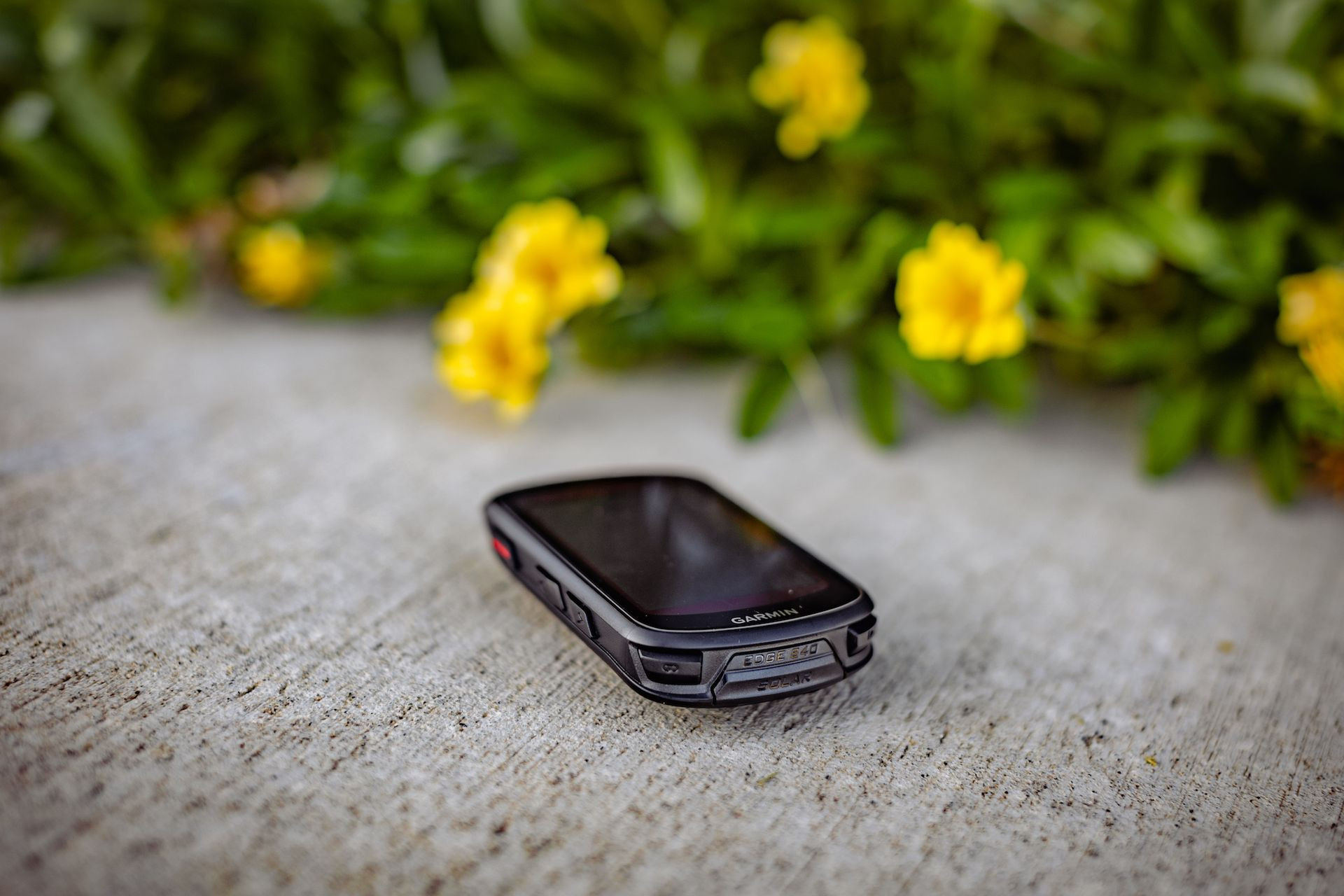 Garmin Edge 840 GPS cycling computer
Garmin Edge 840 GPS cycling computer
(Image credit: Daniel Palma)
Garmin Edge 840 GPS: Detailed Review
Best for: Cyclists seeking a feature-rich cycling computer with incident detection and safety-focused tracking features.
Expert Analysis:
The Garmin Edge 840 is a high-performance GPS cycling computer packed with features for training, navigation, and safety. While primarily a cycling computer, it includes valuable tracking and safety functionalities relevant to bike security.
Key Features and Functionality
The Garmin Edge 840 incorporates GPS, GLONASS, GALILEO, altimeter, gyroscope, and accelerometer sensors for precise location and data tracking in diverse environments. It offers features like LiveTrack, Group Livetrack, Incident Detection, Find My Edge, and Bike Alarm.
LiveTrack allows real-time location sharing with pre-selected contacts via email, keeping them informed of your ride progress and location. GroupTrack enables real-time location sharing within a riding group, visible on the Edge 840 screen.
Incident Detection automatically sends a message to emergency contacts in case of a detected crash, on or off-road. The Bike Alarm feature allows you to set a PIN-protected alarm that sounds and sends a phone notification if the bike (and Edge 840) is moved, useful for short stops. Find My Edge emits an audible beep to help locate the device within Bluetooth range of your phone. The “Last Known Location” feature in the Garmin Connect app shows the device’s last recorded location.
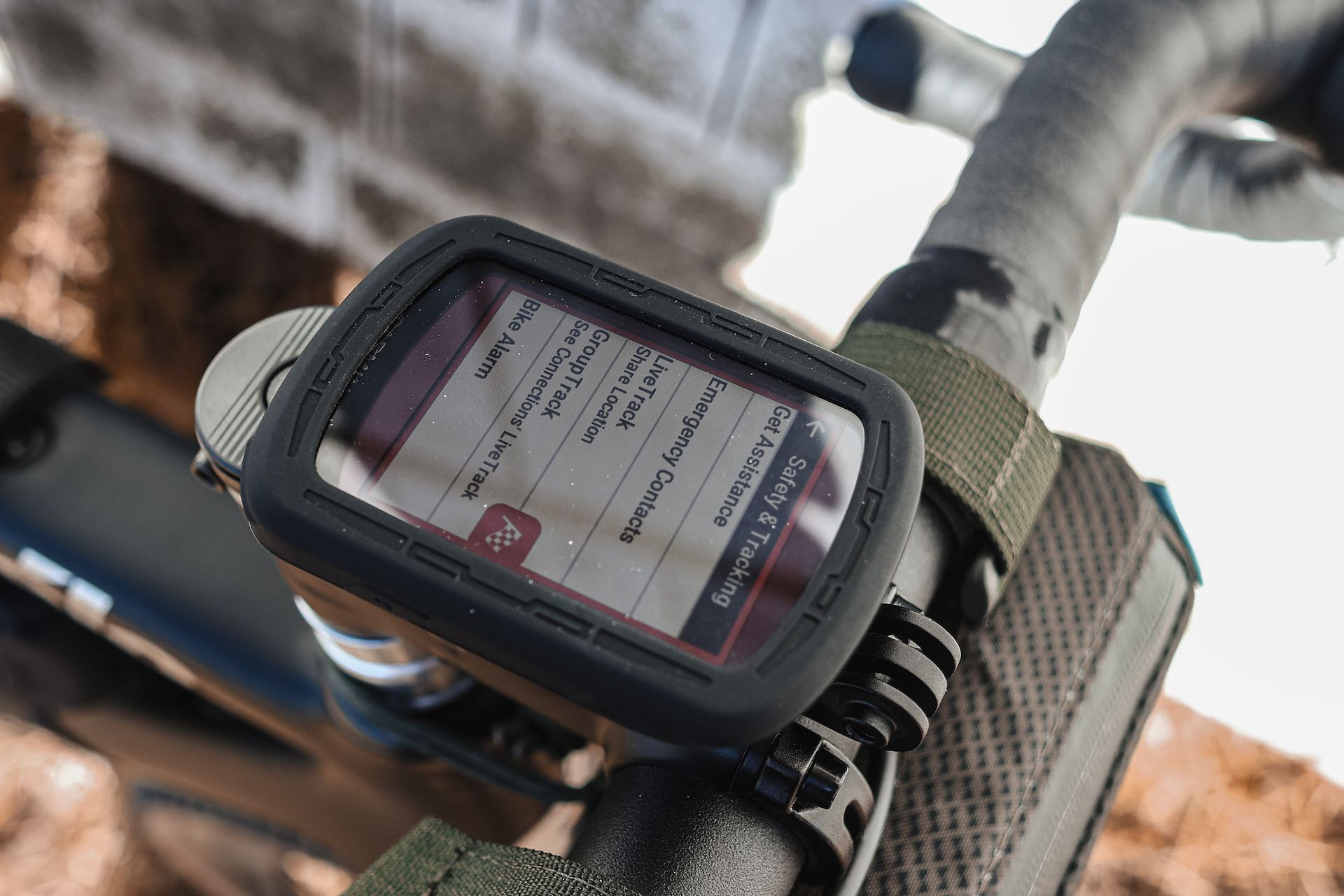 Garmin Edge 840 GPS cycling computer interface
Garmin Edge 840 GPS cycling computer interface
(Image credit: Daniel Palma)
Pros of the Garmin Edge 840 GPS:
- Comprehensive Cycling Computer: Offers a vast array of cycling data, navigation, and training features.
- Accurate GPS Tracking: Utilizes multiple satellite systems for precise location data.
- LiveTrack and GroupTrack: Real-time location sharing for safety and group riding.
- Incident Detection: Automatic crash detection and emergency notification.
- Bike Alarm: PIN-protected alarm for short-stop bike security.
- Find My Edge: Audible beep to locate the device within Bluetooth range.
- Last Known Location: Displays the device’s last recorded location.
Cons of the Garmin Edge 840 GPS:
- Phone Dependence for Some Features: LiveTrack, GroupTrack, and Incident Detection require a paired smartphone.
- Battery Life Limitation: Tracking features are only active when the Edge 840 is powered on.
- Alarm Volume: The Bike Alarm could be louder for greater deterrence.
- Cost: Garmin Edge cycling computers are a significant investment.
- Not Dedicated Bike Tracker: Primarily a cycling computer, not a dedicated, always-on bike tracker.
Verdict:
The Garmin Edge 840 GPS is an excellent cycling computer with valuable safety and tracking features. LiveTrack, Incident Detection, and the Bike Alarm enhance safety and provide some level of bike security. However, its tracking features are contingent on the device being powered on and paired with a phone. If you’re already considering a cycling computer, the Edge 840’s safety features are a significant bonus. For dedicated, always-on bike tracking, consider pairing it with a separate GPS tracker from this list.
ADVICE: Choosing the Right GPS Bike Tracker
Understanding GPS Technology
Global Positioning System (GPS) technology has been around since the 1970s. Currently, around 30 GPS satellites orbit Earth at approximately 7,000 miles per hour, about 12,000 miles above us.
A GPS tracker uses these satellites to determine and record an object’s location and movement history. GPS receivers calculate precise latitude, longitude, and sometimes altitude. “GLONASS” is another satellite system, and many trackers incorporate both GPS and GLONASS for improved accuracy and coverage. GPS data can be accessed on computers, smartphones, or tablets and shared.
Selecting the Best Bike Tracker for Your Needs
Choosing the right bike GPS tracker involves considering several factors beyond just price:
- Budget: Determine how much you’re willing to spend on the tracker and any potential subscription fees.
- Bike Type and Mounting: Consider your bike’s frame and where you can discreetly mount a tracker. Some trackers are designed to blend in with bike components.
- Features: Identify essential features: real-time GPS tracking, Bluetooth tracking, alarm, battery life, water resistance, geofencing, etc.
- Environment and Usage: If you regularly lock your bike outdoors or commute in all weather, prioritize water resistance (IP65 or higher).
- Connectivity and Range: Bluetooth trackers have limited range, while GPS/LTE trackers offer broader coverage but may require subscriptions.
- Subscription vs. No Subscription: Decide if you’re willing to pay a subscription fee for GPS/LTE tracking or prefer a subscription-free Bluetooth tracker.
- Battery Life: Consider battery life needs. Rechargeable trackers require regular charging, while long-life battery trackers offer extended periods between charges or battery replacements.
- Stealth and Discretion: If concealing the tracker is crucial, choose smaller, more discreet models and consider mounting locations carefully.
Anti-Theft Bike Trackers: Enhancing Security
Anti-theft bike trackers come in various forms. Bluetooth trackers like Apple AirTags rely on nearby Apple devices for location updates, making them more effective in populated areas. GPS trackers offer wider coverage but may require subscriptions. The most effective anti-theft strategy often involves combining a tracker with robust physical locks and secure parking practices.
Optimal GPS Tracker Mounting Locations on a Bike
The ideal location for a bike GPS tracker is hidden and不易被发现 by thieves. Some trackers are designed to resemble bike components like lights or bottle cages. Tamper-proof bolts can make removal difficult. Consider hiding trackers inside the frame, such as in the seat tube or handlebar. Discretion is key to preventing thieves from disabling the tracker quickly.
Can Bike Thieves Disable GPS Trackers?
Experienced bike thieves are increasingly aware of GPS trackers and may attempt to disable them. This underscores the importance of choosing a tracker that is discreetly hidden and difficult to find and remove. Trackers disguised as bike components or hidden within the frame offer better protection against detection and disabling. Combining a hidden tracker with other security measures is the most effective approach.
Daniel Palma
Daniel Palma’s cycling expertise spans gravel riding, mountain biking, racing, and long-distance adventures. With extensive hands-on testing of GPS trackers across various comparative reviews, he possesses in-depth knowledge of the current market trends and technology in bike security and tracking.

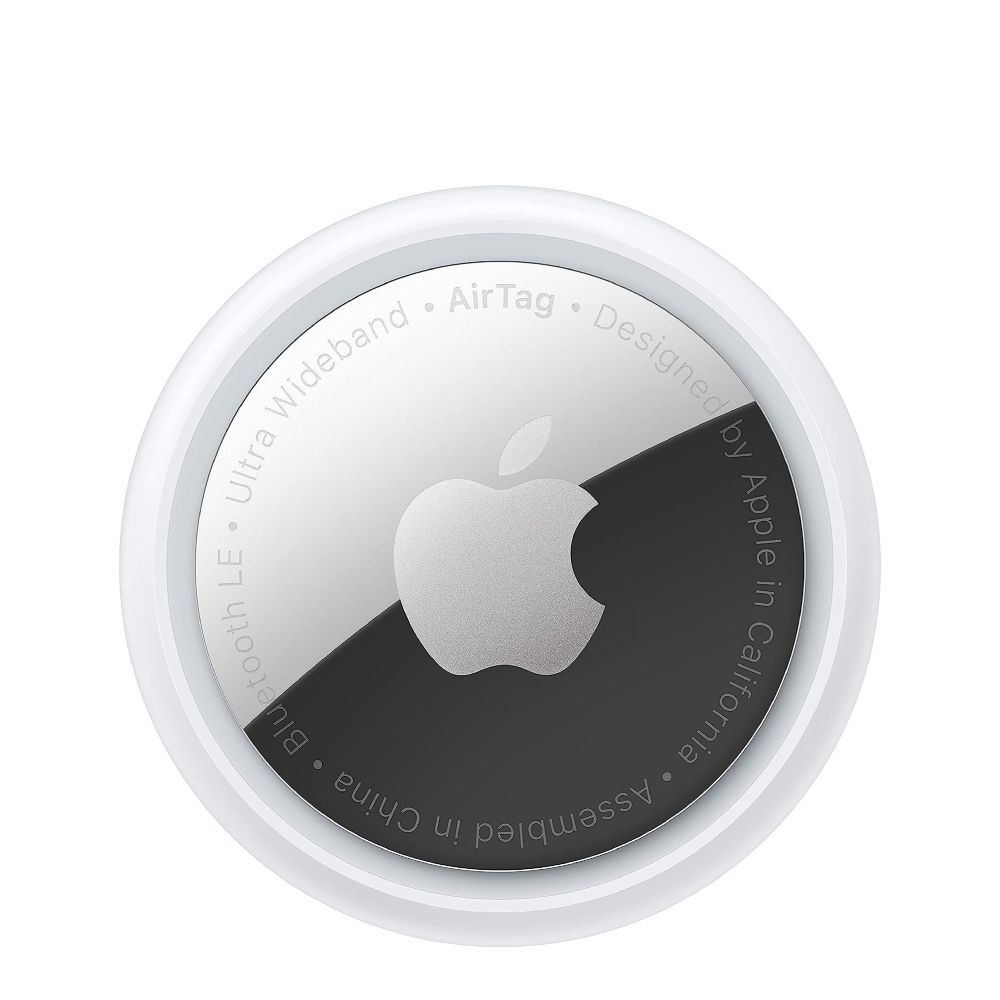
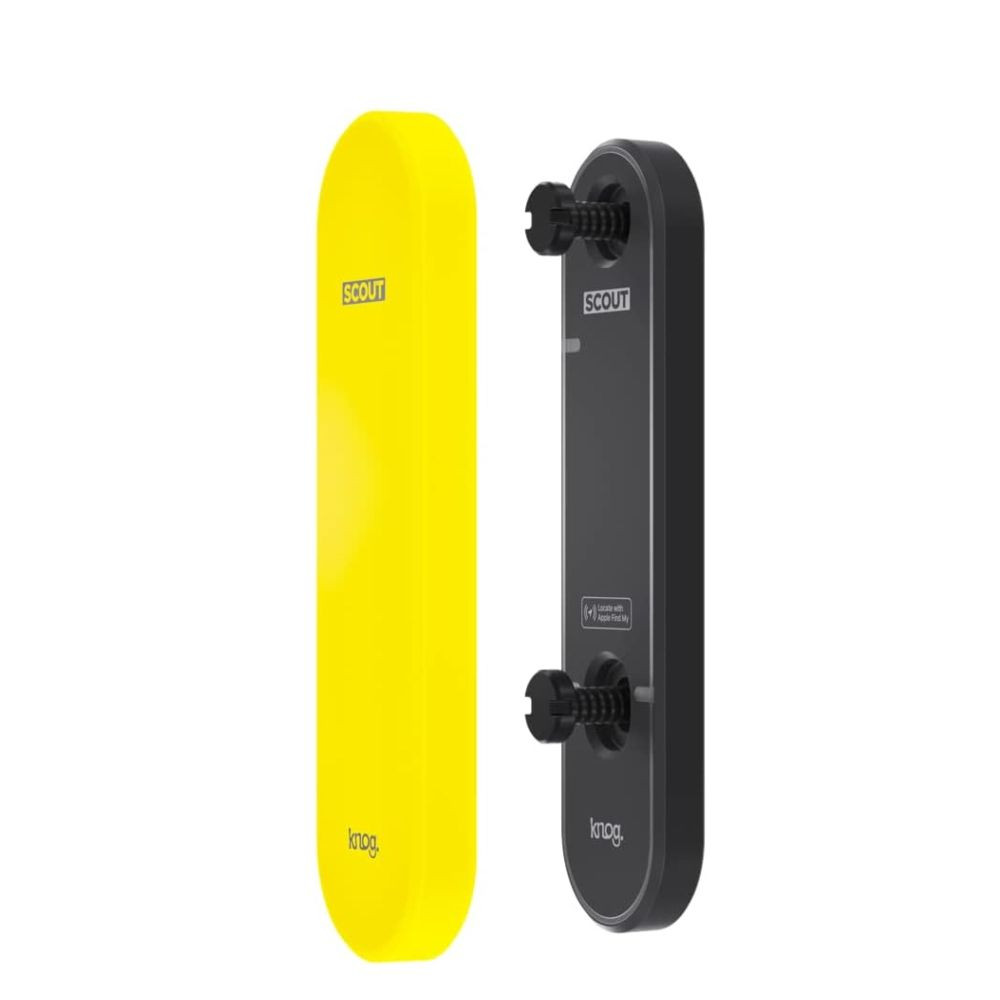 Knog Scout
Knog Scout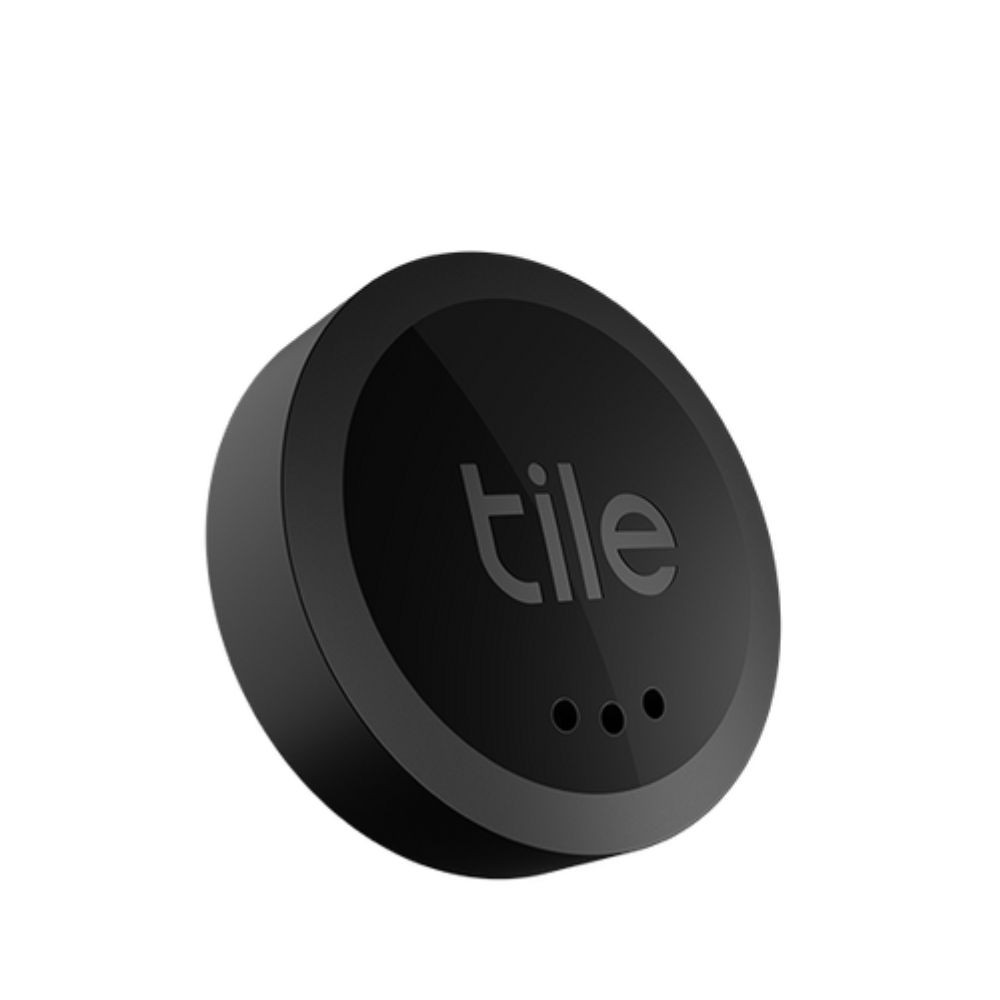 Tile Sticker
Tile Sticker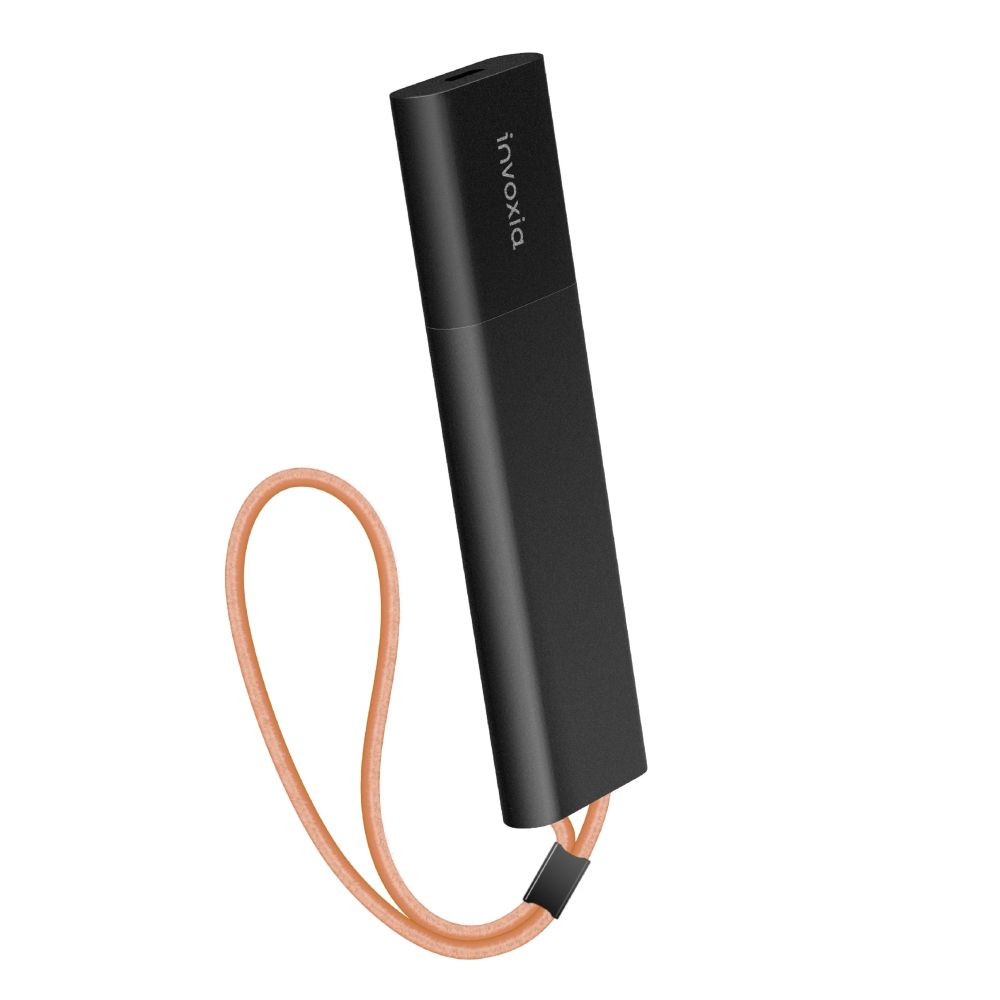 Invoxia real time gps tracker
Invoxia real time gps tracker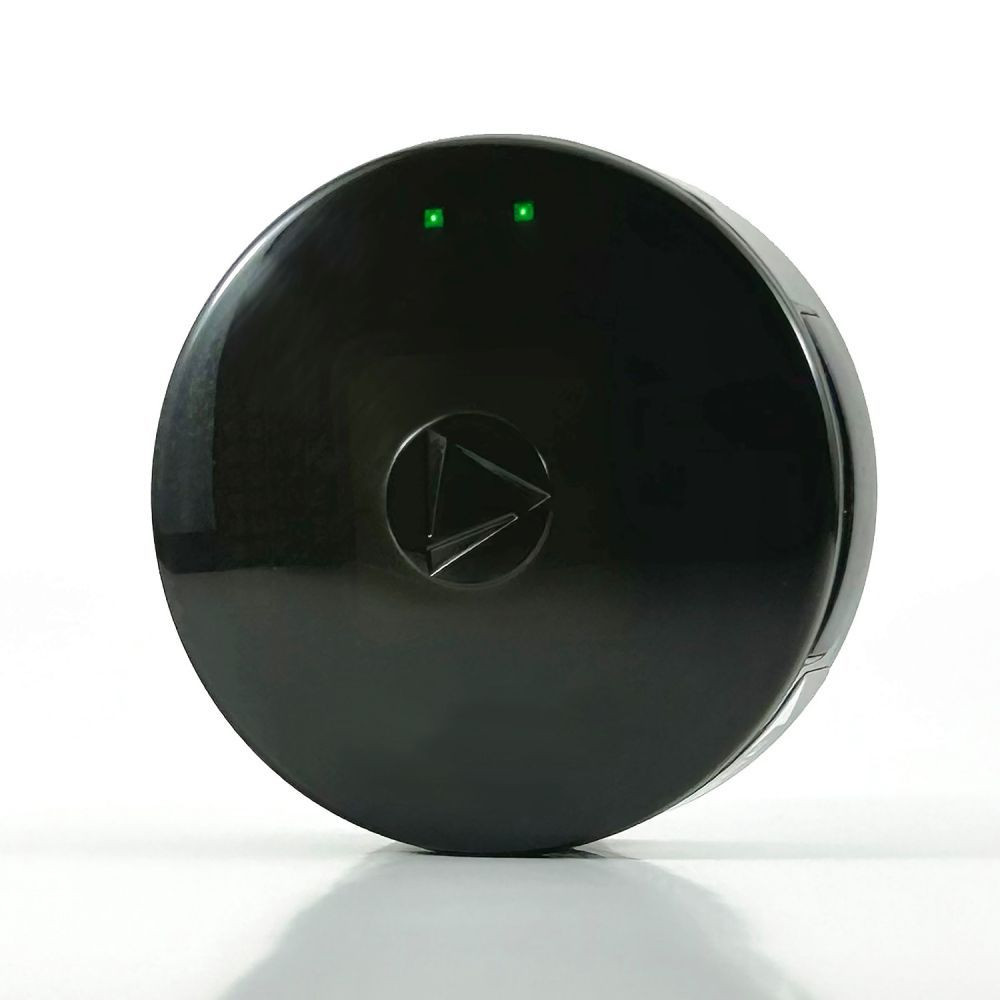 Land Air Sea 54 GPS tracker
Land Air Sea 54 GPS tracker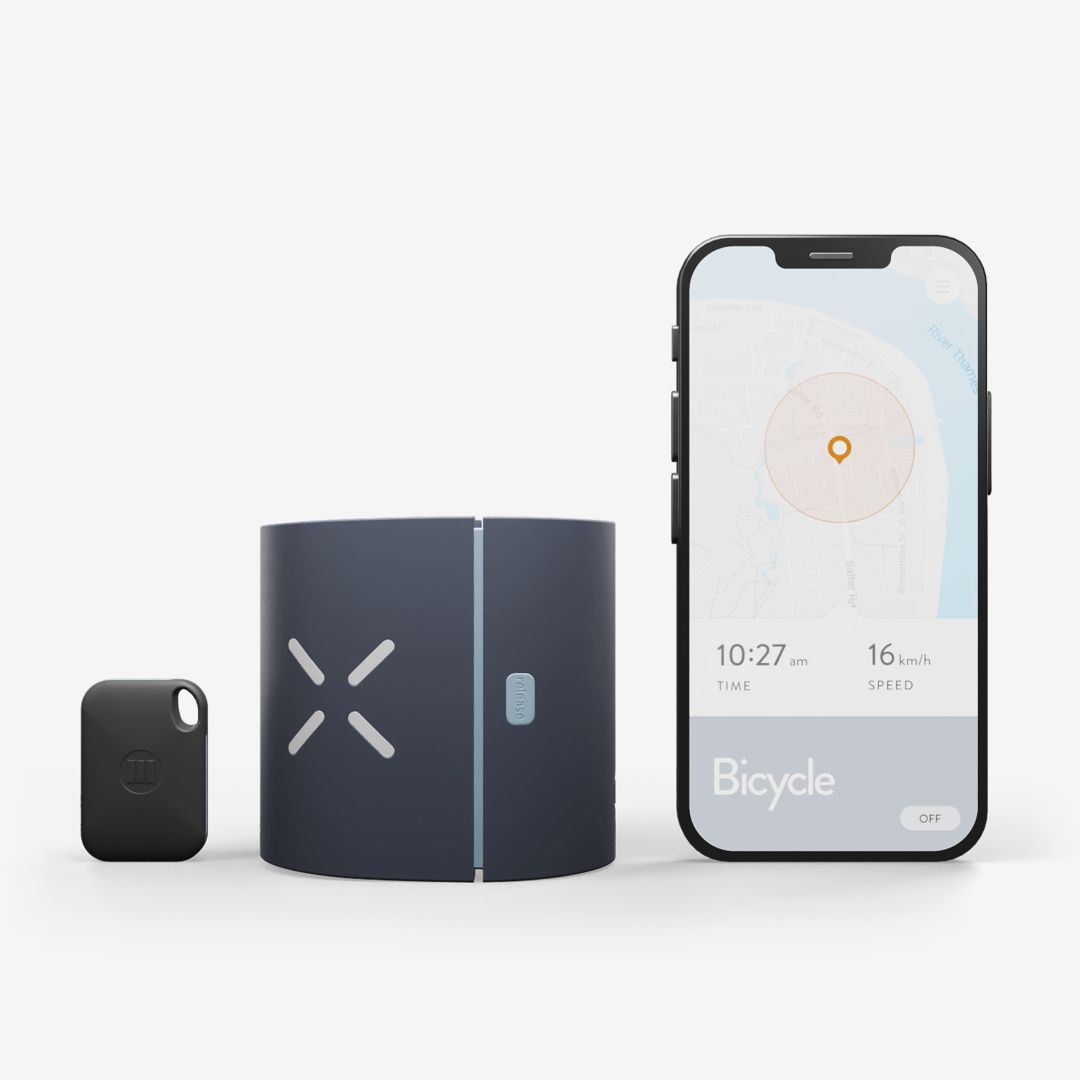 Cycloop tracker
Cycloop tracker